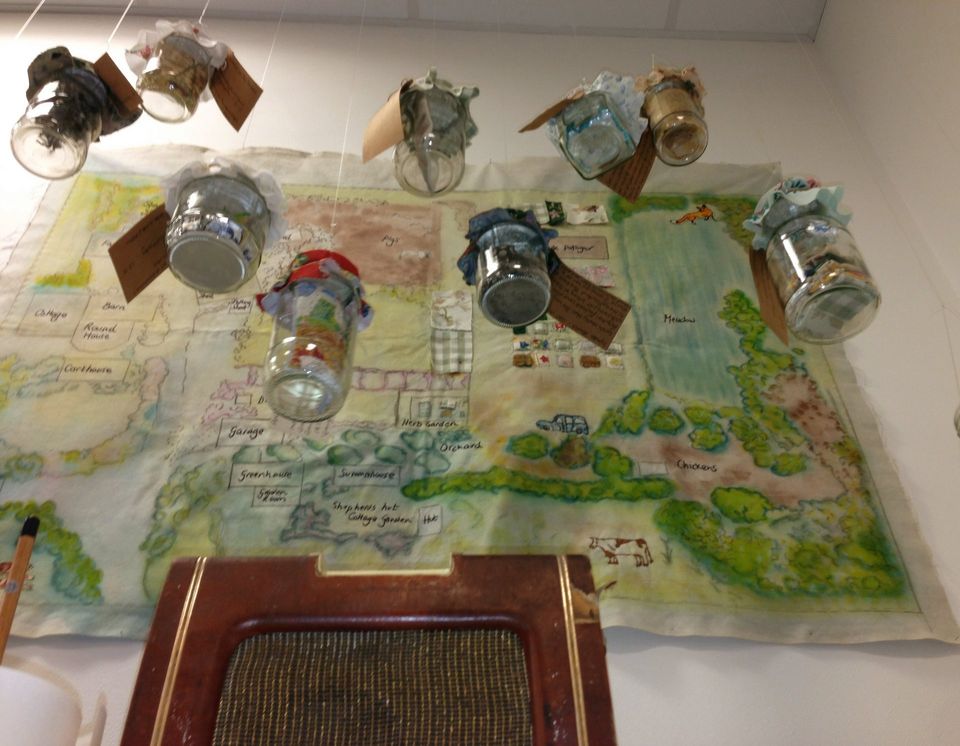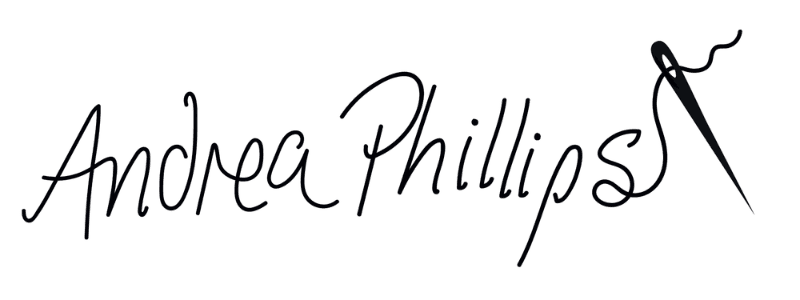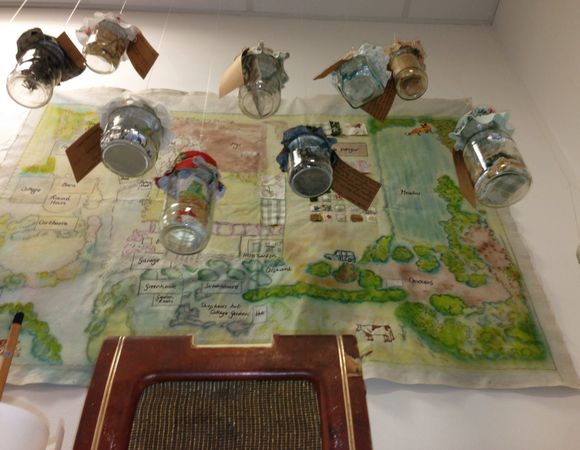
In 2007 I enrolled on a Fine Art textile course at Cornwall college. I had lost my Mum the year before who was a seamstress, she could make anything but could teach nothing, so for some reason I decided that I would teach myself the art of sewing. The Fine Art bit was harder to grasp in the beginning as I had a design background and liked things to be fairly clear cut. This was soul searching and more so than it perhaps should have been because of the links to my Mums departure.
The first year of my foundation degree end of year show was about colour flowers, I exhibited some painterly and machine stitched works that were influenced in part by the painter Patrick Heron.
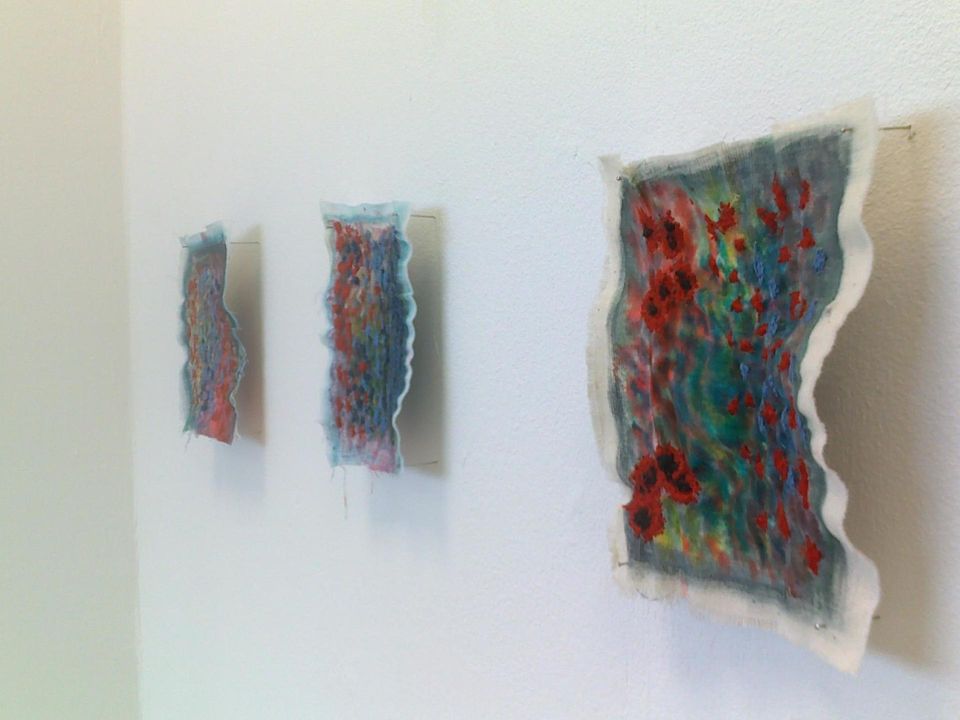
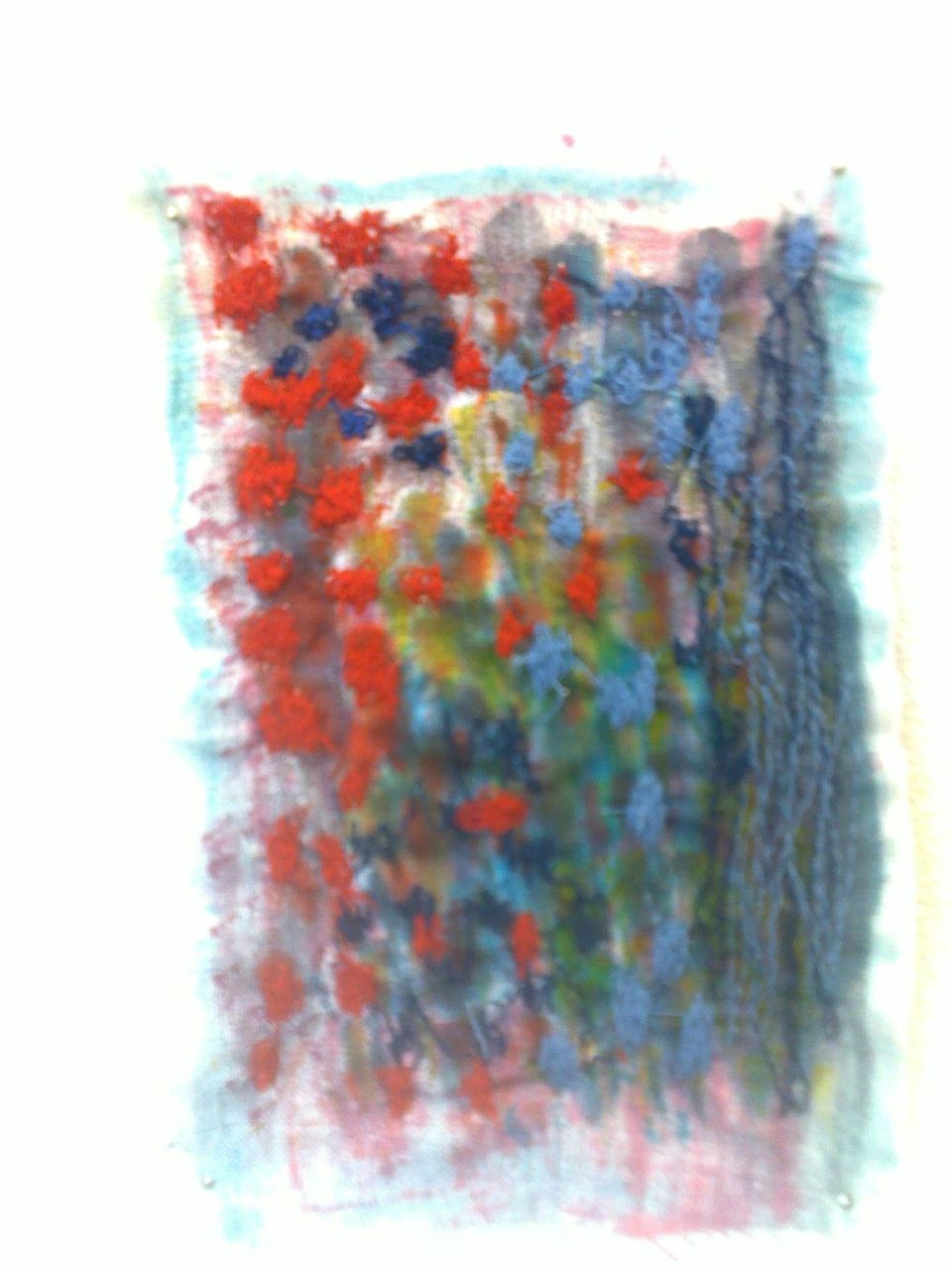
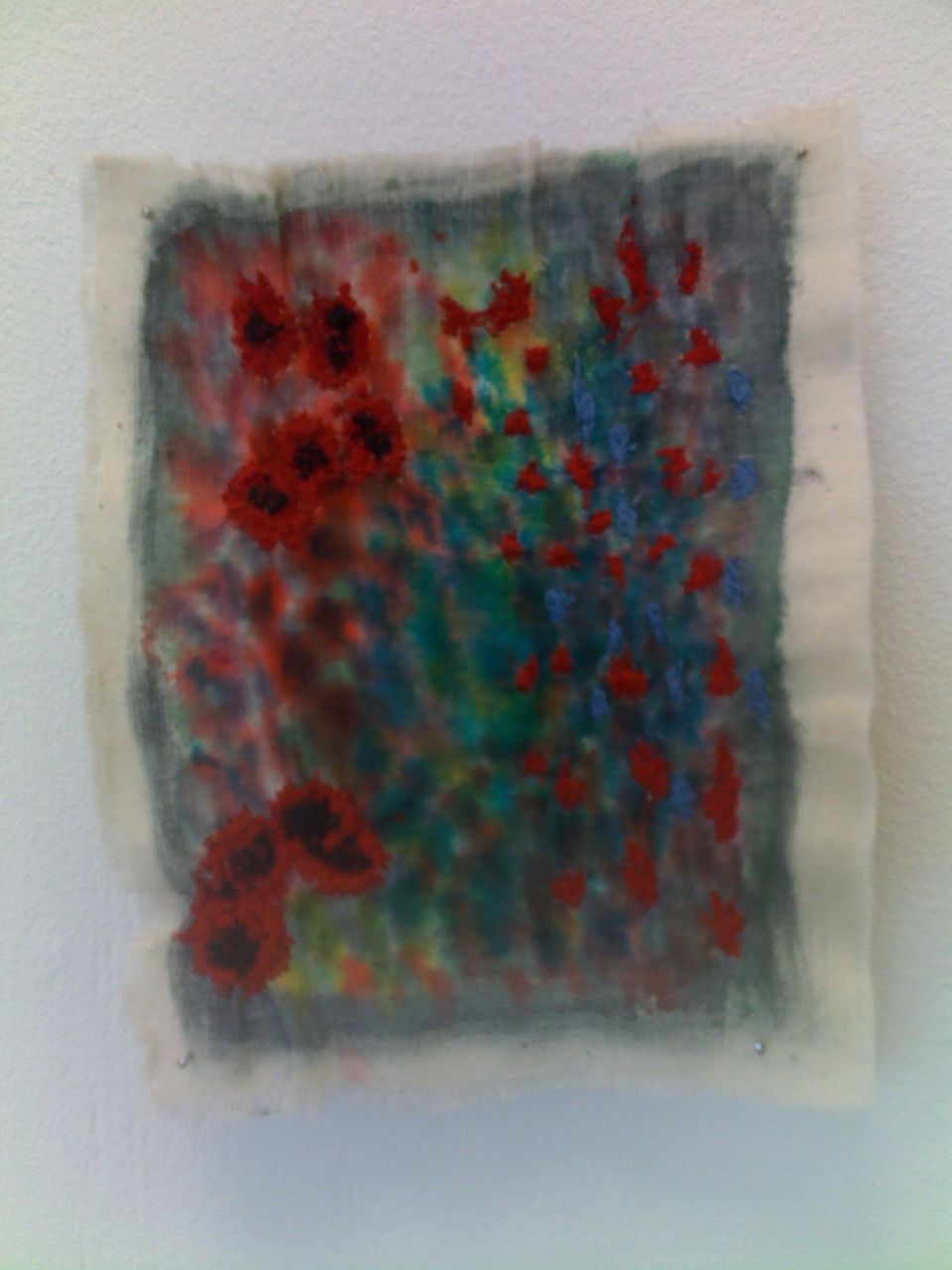
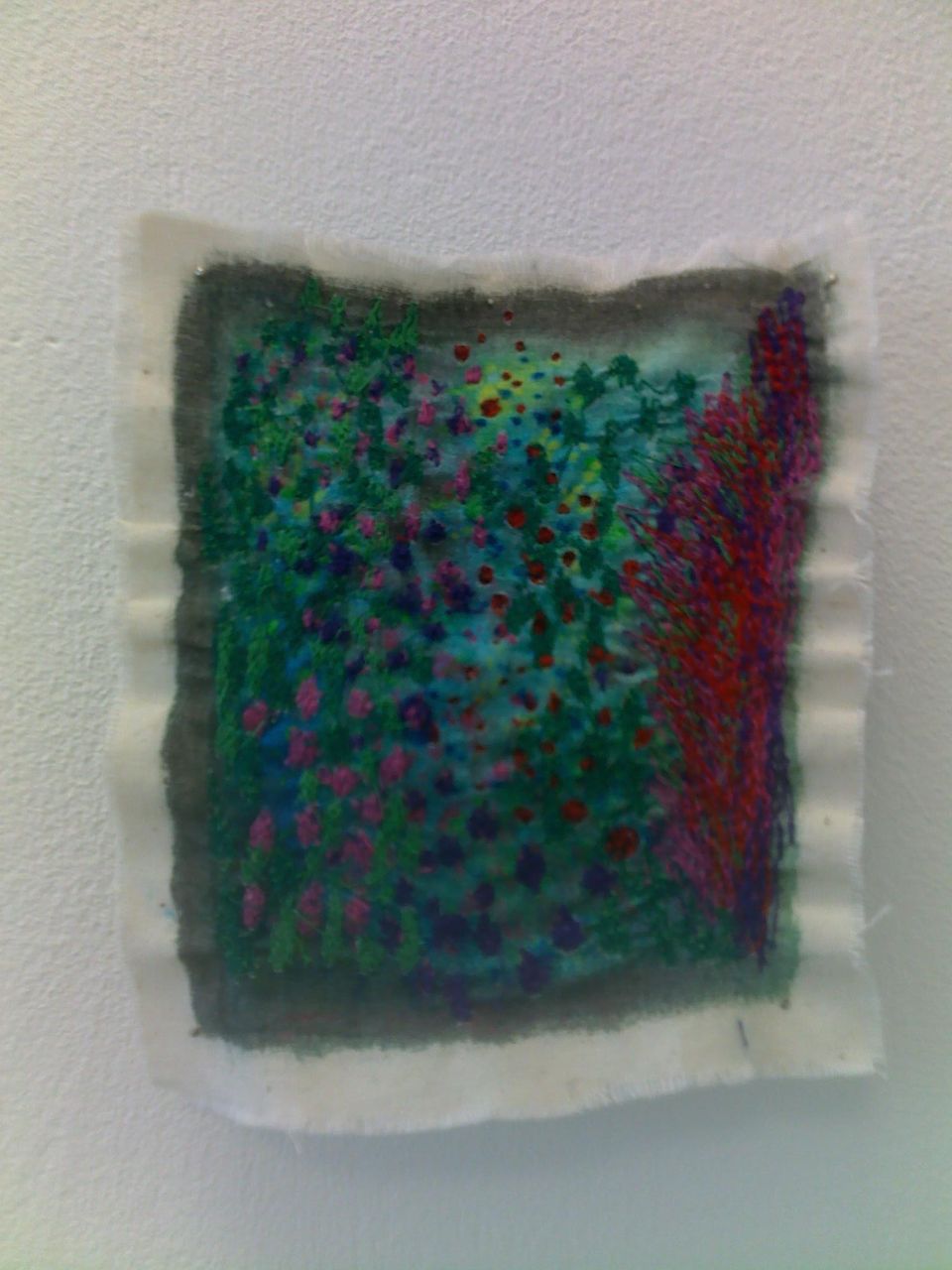
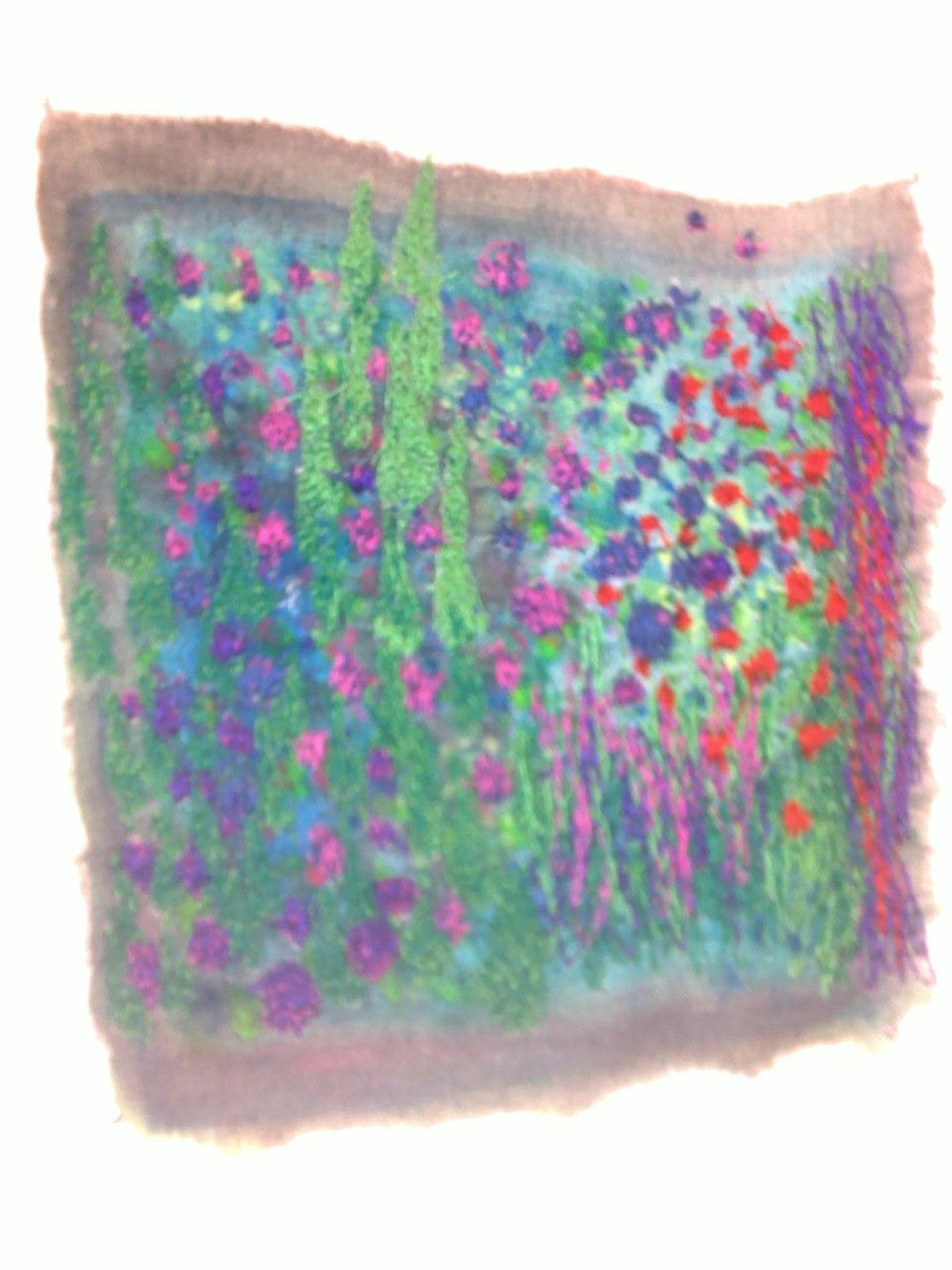
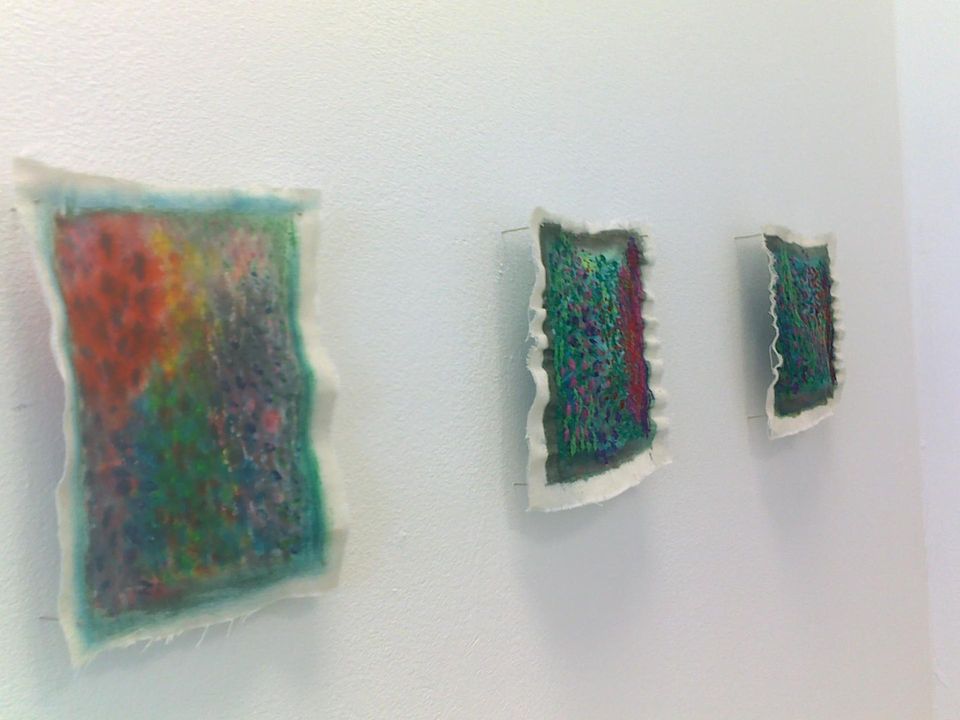
I started to find inspiration on walks with my dog Bracken; sometimes stumbling upon a different language, the language of Jackdaws and the intrigue of a dead animal…a narrative would unfold or be implied.
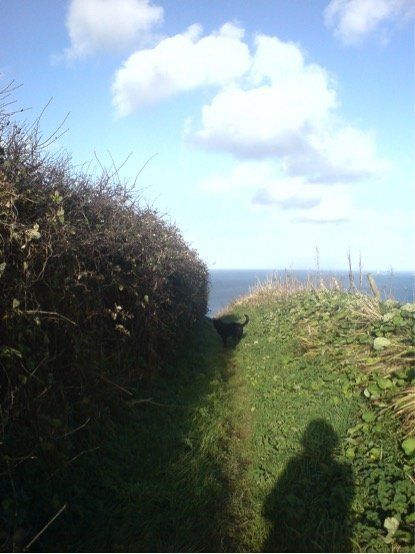
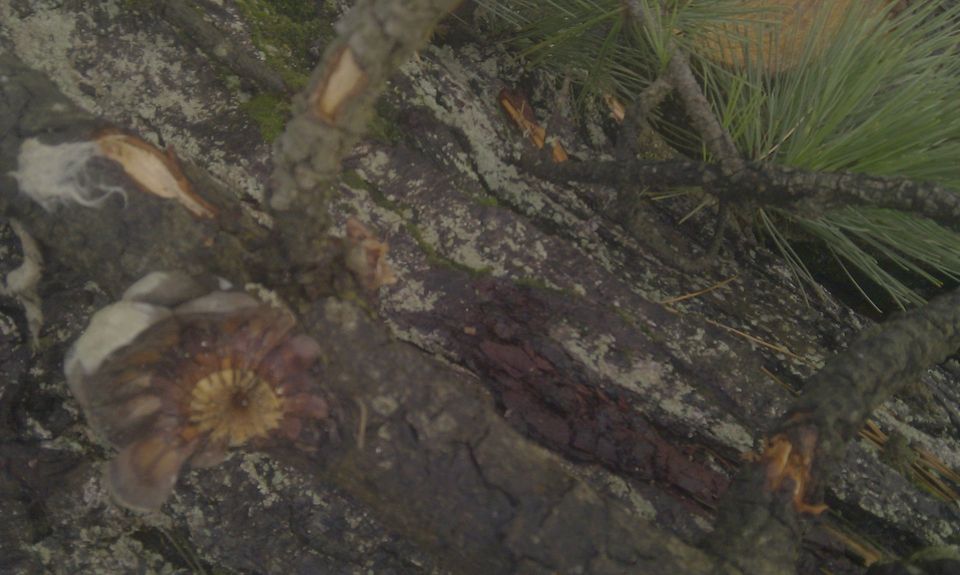
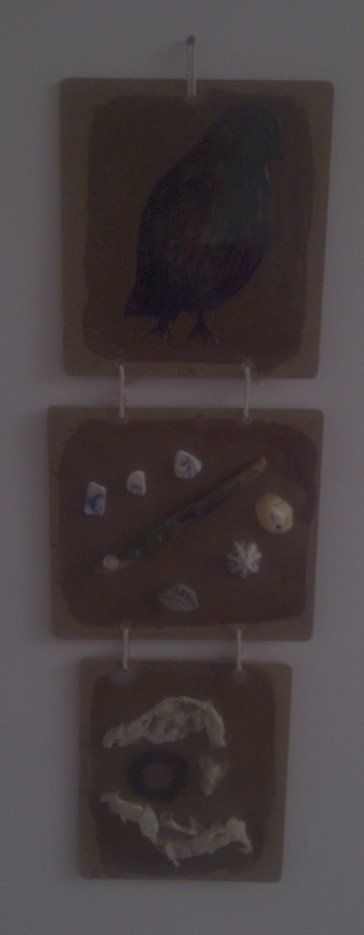

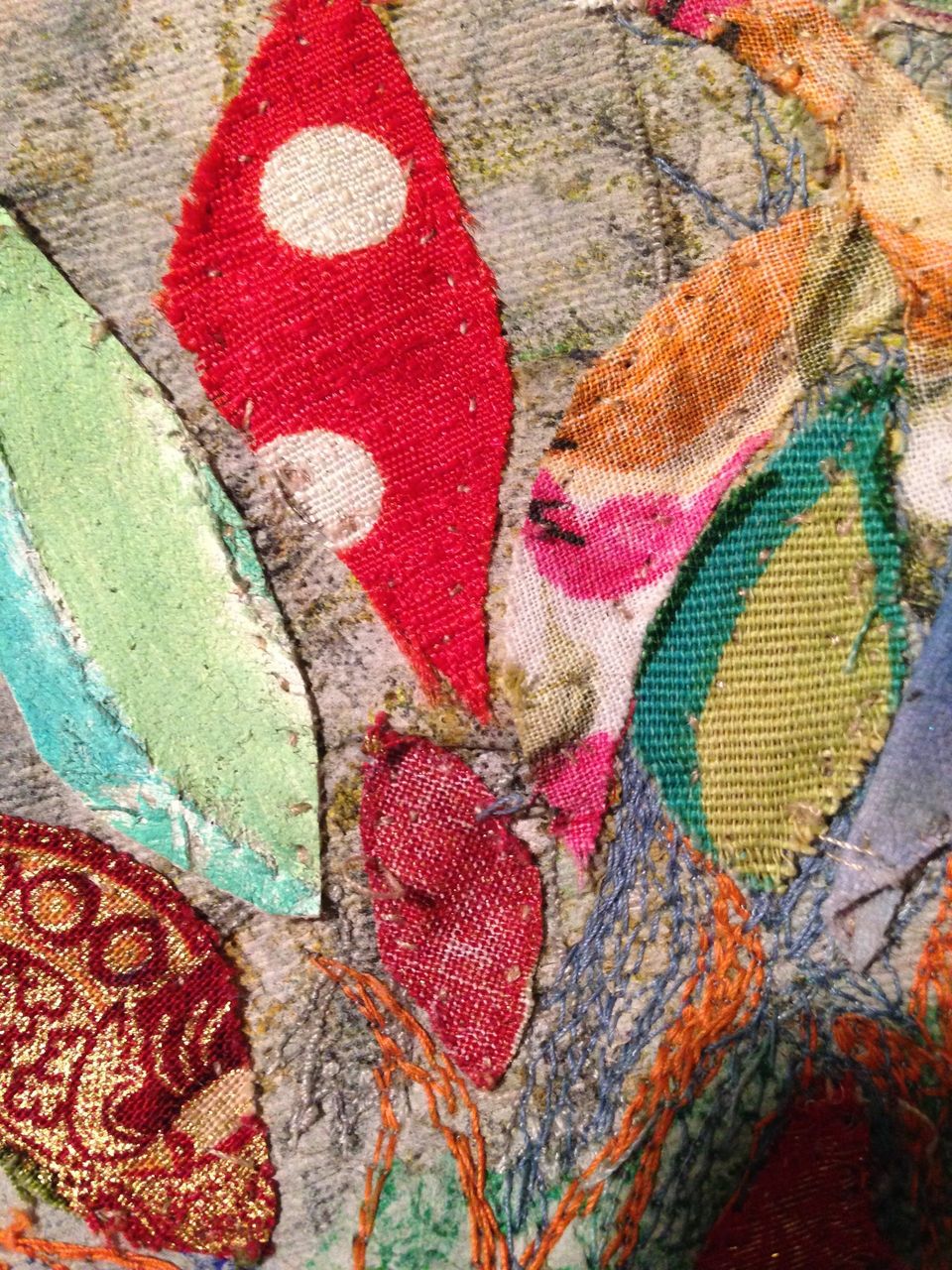
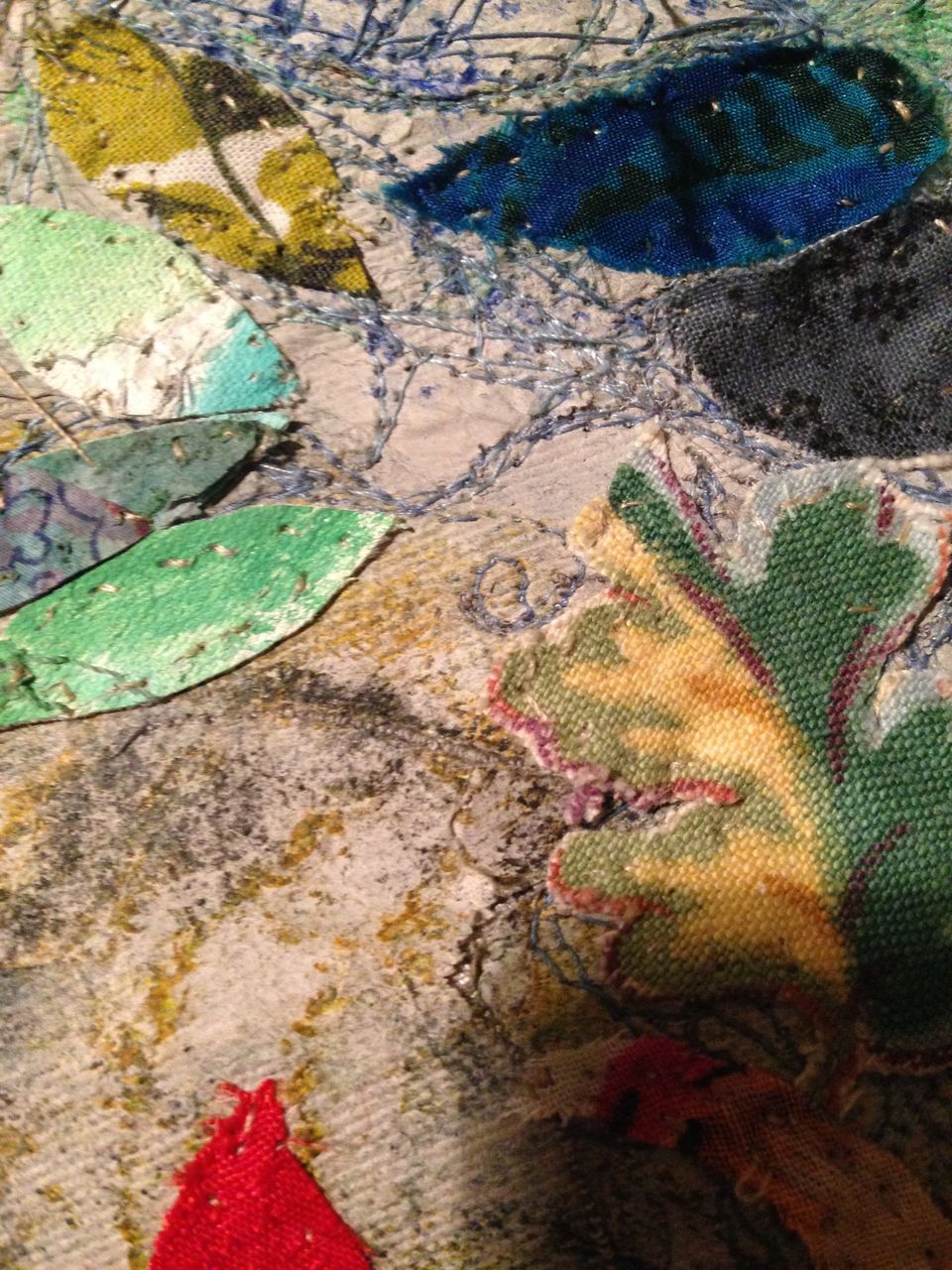
The Sculptor David Nash was himself influenced by the way our planet is curved out and moulded by the act of people and animals walking on the surface of the landscape over time carving out tracks.
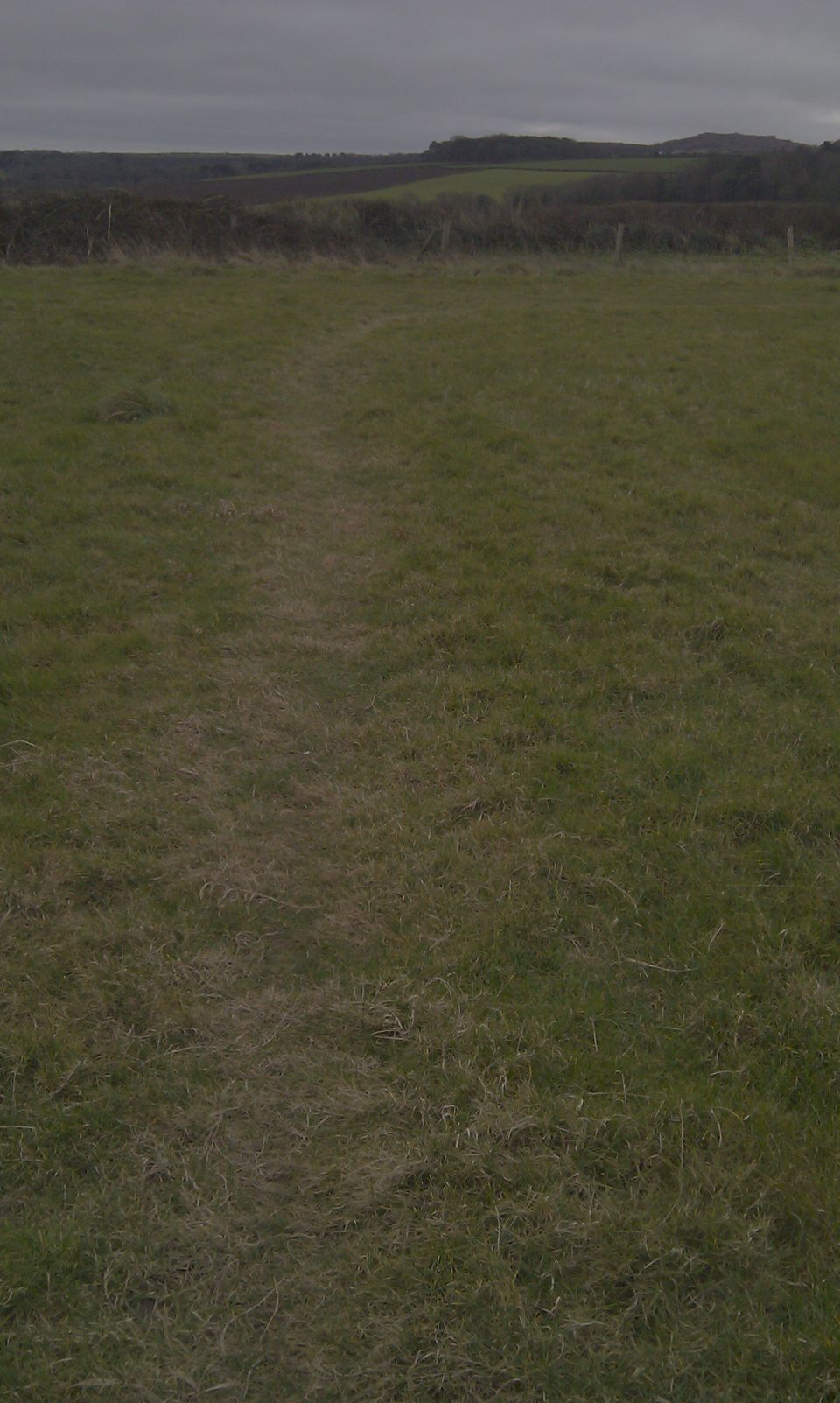
Richard Long a modernist land art sculptor also works with the surface of the earth. He uses mud to make paintings that are very much about movement like the painter Jackson Pollock. But long starts out with a walk…a journey. It was his use of documentation with words and graphic poetry that first introduced the idea of language and meaning to me that was not solely a visual language but incorporated letters and words as a graphic illustration of passing through a certain place…making a track.
Walks were like reading, each walk representing the turning of a page.
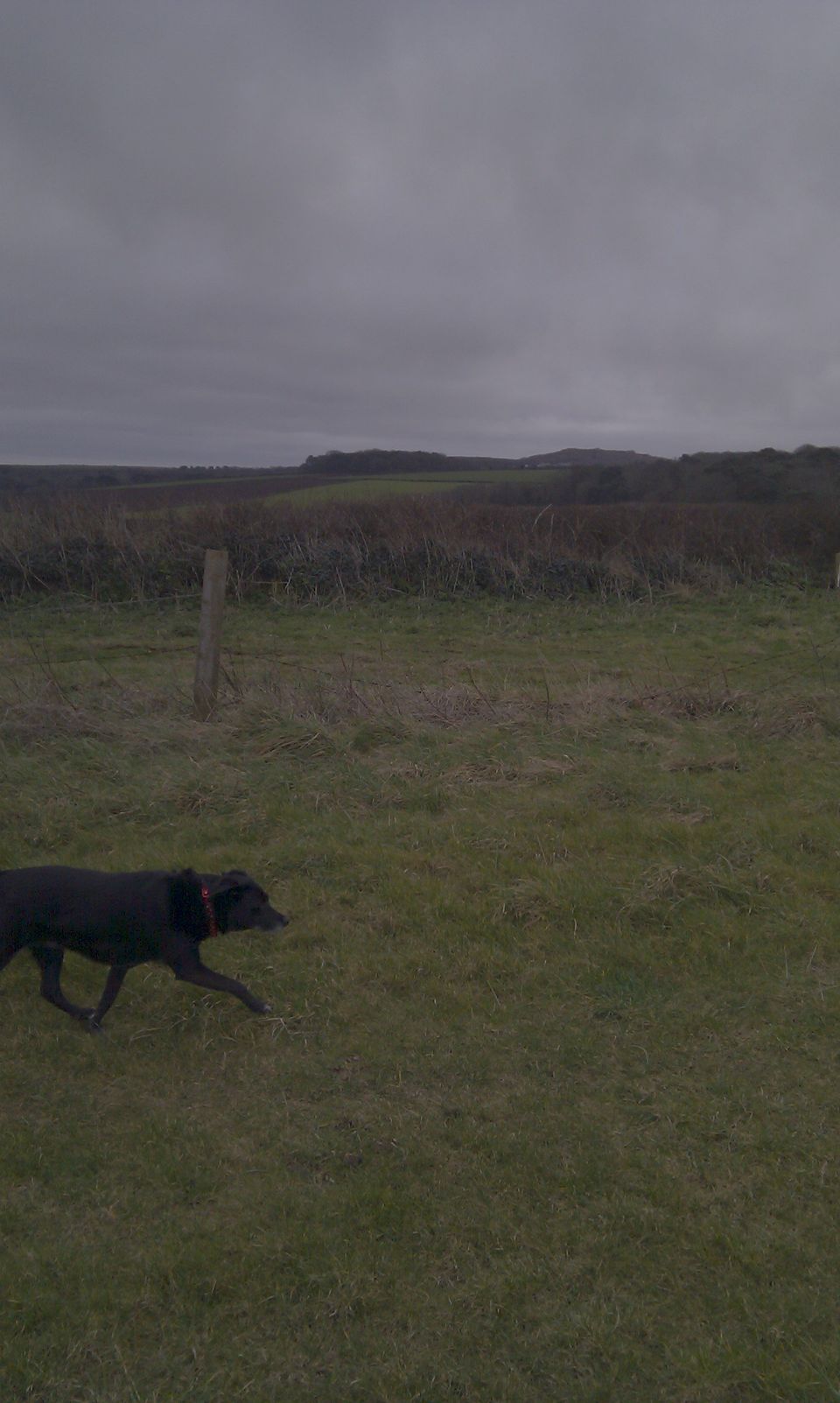
Walks
Language
Narrative
Surface
Tracks
Landscape
Found
Washed up
Rhythm
Repetitive
Reading
Nature
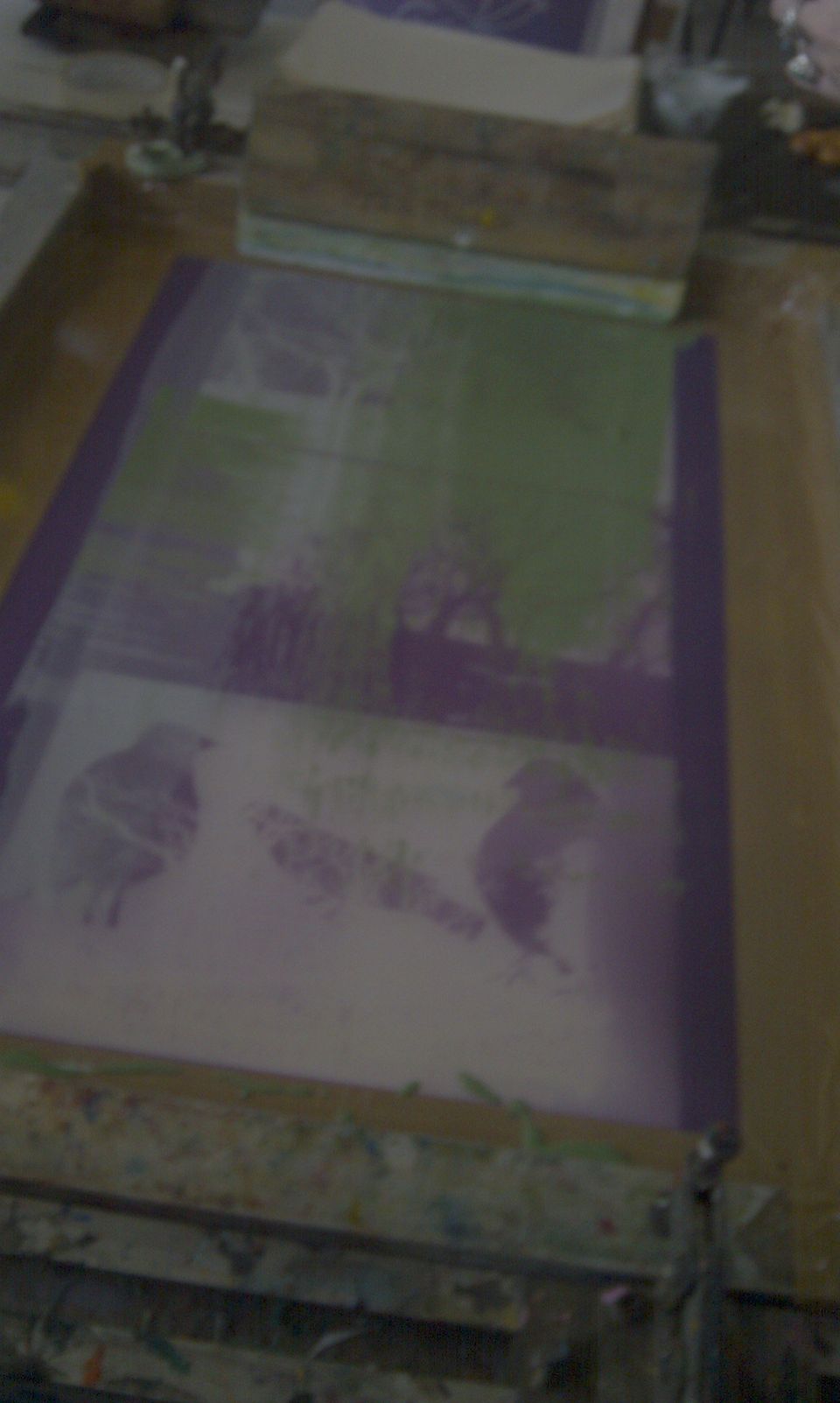
On one of my walks I discovered a bench on the coastal path that had a brass plaque on it remembering a lady who was called Phyllis Newman, apparently she had love this place. I would visit the bench often becoming more and more intrigued about who this lady was. Was she a local or a holidaymaker, was she happy, I wondered about her identity and began to make a piece of artwork that was solely about the idea of who Phyllis had been.
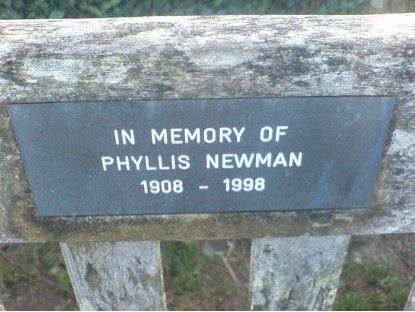
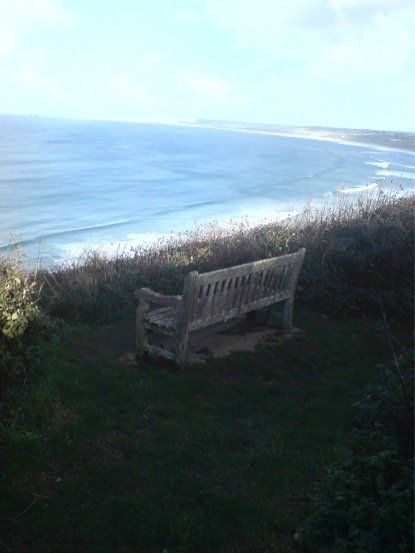
Phyliis’s Bench on the coastal path above Lelant beach near my home
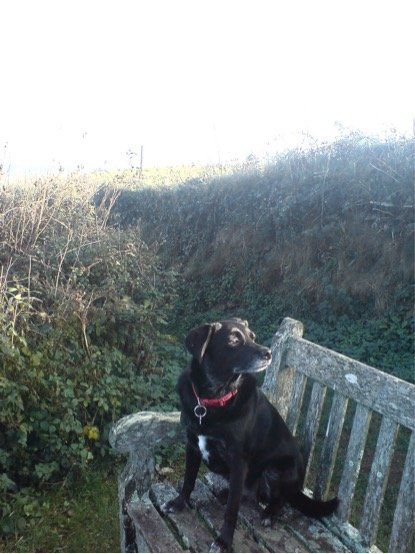
Bracken enjoying our moment on the bench in the sun.

Having found an old and damaged bench, I set about repairing it and covering it in textile lichen.

I used a heat gun to shrink down the fabric so that it looked more like lichen.
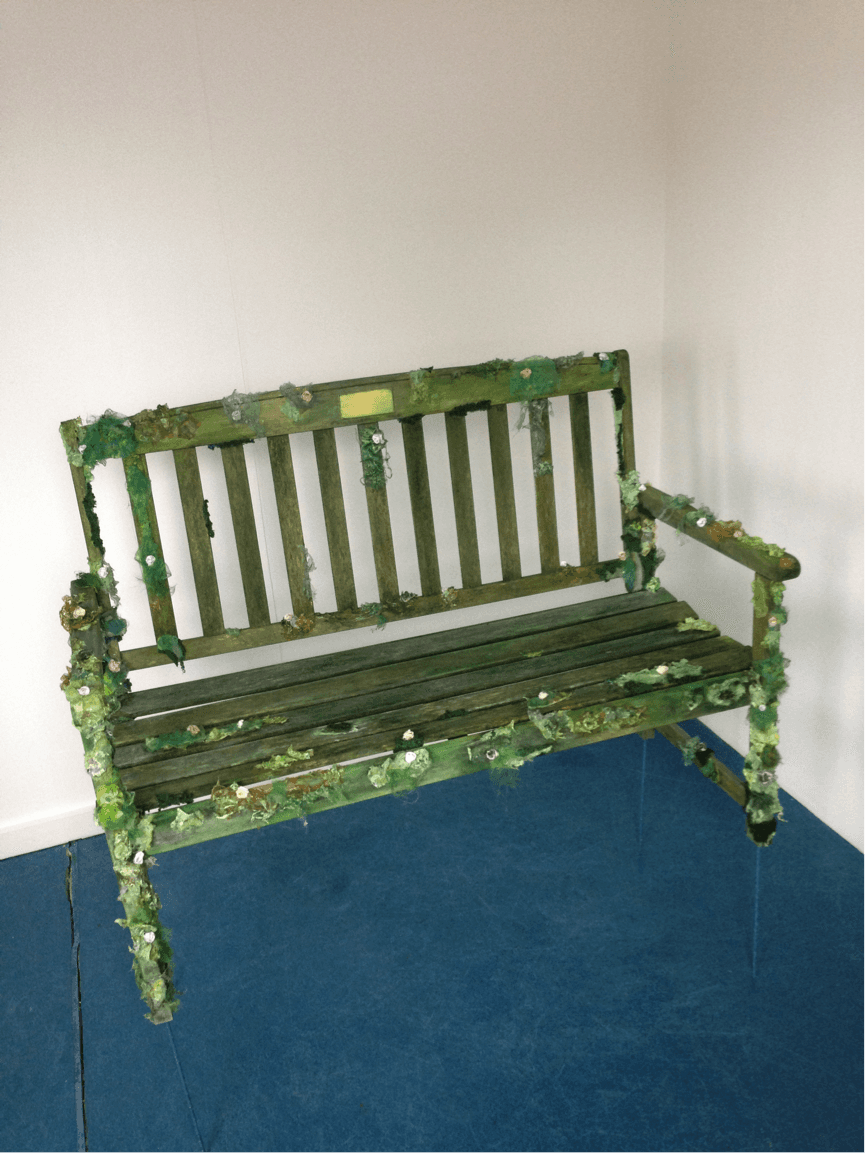
I used a heat gun to shrink down the fabric so that it looked more like lichen.
This installation, titled;’ Bench ‘ was accompanied by a recording taken from the outside at Phyllis’s bench in situ on the coastal path. There was something quite magical about the serenity and reverence of the whole piece of work.
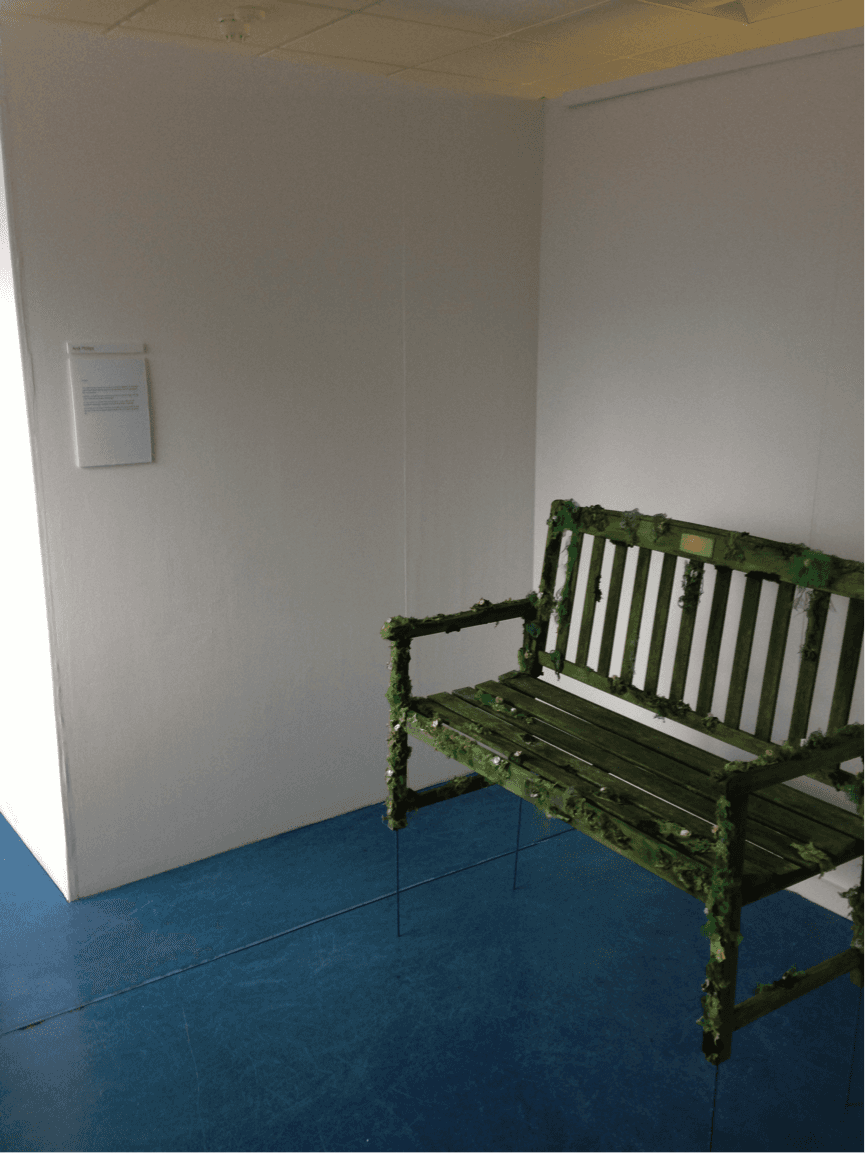
At a point before the exhibition I placed a request on the real bench in situ on the coastal path asking if anyone knew the identity of Phyllis Newman, the following photograph is an example of one of around fifty responses, left in the form of notes on the bench.
I still do not know how accurate this note is but in the end it was kind of sad to actually find out a possible truth in a sea of imaginative thought regarding who this lady might have been. To summarise a large part of the work and subsequent bench installation was stronger when I had no idea who Phyllis may have been.
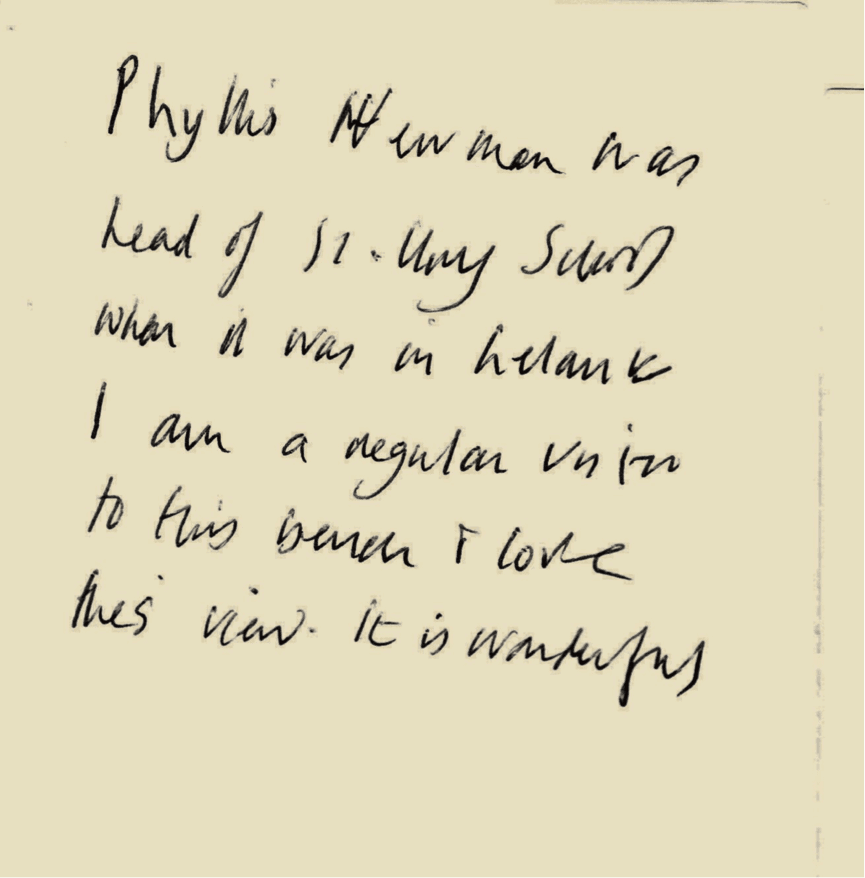
This installation is the culmination of an enquiry into the themes ‘Absence’ and ‘Presence’. Loss of a loved one and the emrty space once occupied is often a space we want to fill with a form of remembrance.
Focusing on a specific place, on the coastal path near St Ives, and a particular memorial bench in memory of Phyllis Newman ( unknown to myself), who lived from 1908- 1998,a narrative of mystery and curiosity began.
This work explores the presence of Phyllis in her absence. The bench offers a time for contemplation and elevation: a collection of comments left on the bench endorse this.
In addition this narrative has expanded into a further artwork on the plinth, whereby an imagined narrative of Phyllis in 1940 on her bench one summers day is projected from a dark void that is lit up so that a reflection appears on the glass inside the plinth, as if it were a projection of a faint memory.
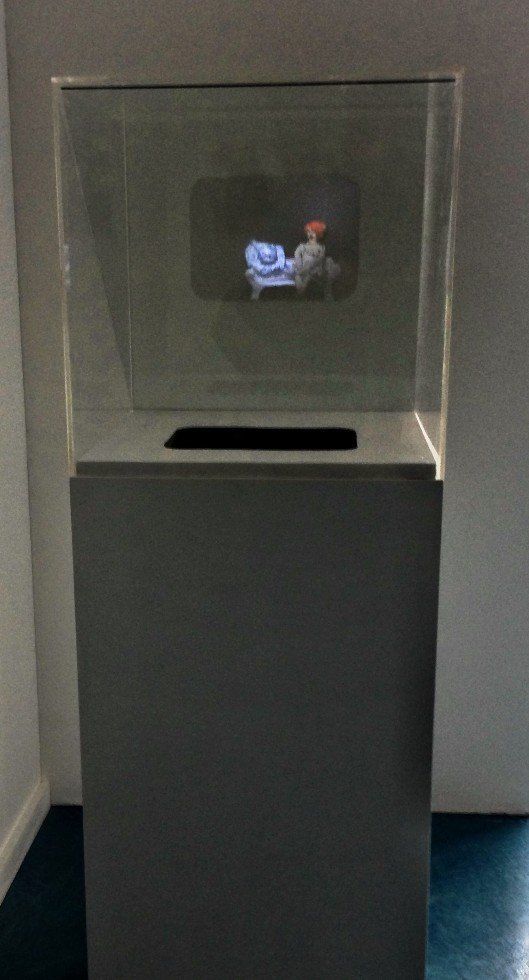
Trevoole Farm Collaborative project
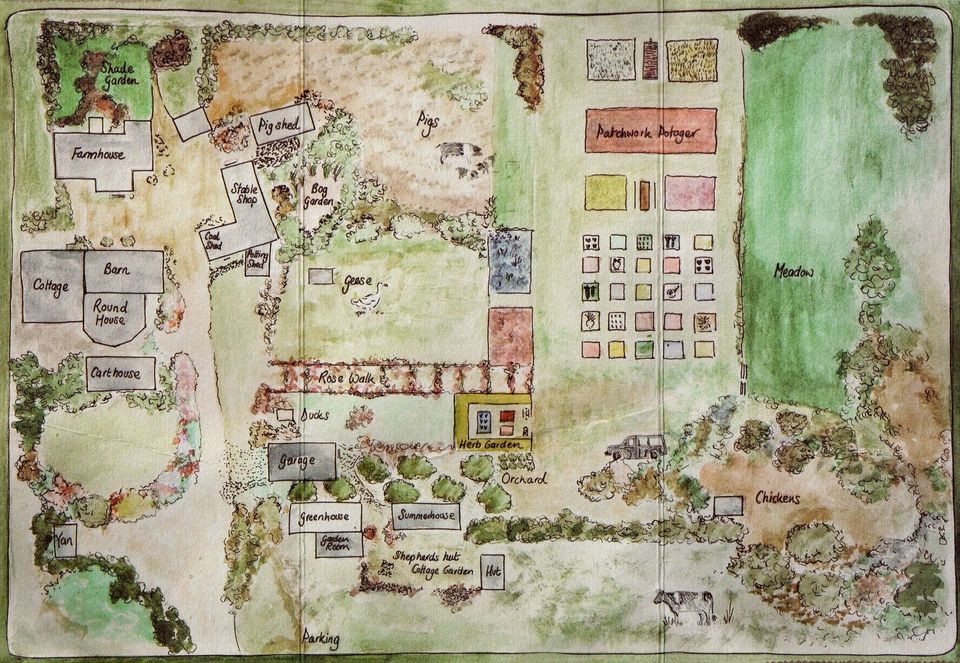
Trevoole farm is an 18th -century farm that sits a few miles outside of Praze - an -Beeble. Beth and Travis the current owners bought the farm after seeing an advertisement in a local paper for an open viewing. They were on holiday at the time from Salisbury where they lived in a rented flat. Beth , studied ’ fine art valuation’ and was working for ‘Laura Ashley’, whilst Travis had his own Window cleaning business.
After viewing the property which at the time was in parts derelict and so overgrown that they did not realise that they were also buying a 3 acre field.
Trevoole had been owned by the same family since 1911 and things were largely unchanged charting the years. The owner only wanted to sell the property to people he liked and thought would be the good people to take on the farm and so after a short interview the sale was agreed. The property was derelict and so overgrown that they could not go inside most of the buildings. The outside was so overgrown that they did not realise that they were also buying a 3 acre field.
Beth and Travis suddenly and unexpectedly had to work out how they were going to do this. Their lives and their business were in Salisbury. Ten years later Travis still commutes to Salisbury to manage his window cleaning business there.
The elderly people who the farm was purchased from in 2002 are now very much older and suffering from dementia. Beth always thought that maybe one day the couple would maybe let them have some old pictures and cuttings of Trevoole farm from years gone by , but sadly, as the onset of dementia has set in, any pictures and memorabilia have possibly been lost also knowledge of the usage of the various buildings on the farm.
Time having gone by is something that I really sense when I visit Trevoole Farm which is now a garden you can visit and is registered with the National Garden scheme, open days take place twice a year. My first visit here though was as a Textile student in 2009.
The evoking of childhood memories for me was really quite surprising. The old car ( a Morris Minor ) parked up outside the old stable building in that lovely old air force blue colour.
Everywhere you look at the farm you see bits of the past carefully placed and collected. For example a collection of countless old pot jelly moulds all different shades of white and cream on the top of a dresser. Piles of neatly folded and laundered vintage materials. The muted tones and colours in the kitchen have been inspired by old Victorian cookery books. When you are sitting in the kitchen you are transported back to not only a place that has history and memories. The atmosphere is captured with a delicateness that quite often evades the National Trust properties I have visited
The memory link that I had when I first visited Trevoole Farm reminded me of my own great grandparents and has helped to define a connection with my family’s farming roots, back in a place called ‘Loftus’, near Whitby, North Yorkshire.
Farm animals themselves are also of some major interest as animals so often have a positive effect on people with mental disability , my own dog companion has been very important in helping me manage my own depression .
Beth and Travis are members of and support the National Garden Scheme , however, they do not profess to be gardening experts, Beth says that , ‘they get by’ and have enjoyed being influenced by gardeners like Geoff Hamilton and Jennifer Davies in her book ‘The Victorian Kitchen Garden’. Beth says fondly that Jennifer Davies reminds her of her own grandma.
Beth stores a lot of her books on the stairs, one her favourites is an auto- biography of Elizabeth David the food writer who believed that people in Britain fed their pets better food than they did their children, she revolutionised food in the 1950’s and could have given Nigella a run for her money. Elizabeth David felt that food should evoke memory of times when the food you were made you feel like you had been loved and nourished and not hold bad memories of boiled fish and bland puddings.
As a child Beth spent days out with her family visiting country houses and Railway museums,’ never went to Disney world or anything like that’. We talked about books as Beth has books everywhere, I mention a children’s book I like called ‘Blackberry Farm’ and as she talks Beth opens a sideboard door to see if she has the book I mentioned. The sideboard is bursting at the seams with old children’s books.
It strikes me that I am in the company of someone who is the real thing authentic through and through. making anything Cath Kinston look reproduction glary and cheap. What is slightly disconcerting for me is that I do like Cath Kidston and all things vintage, Trevoole farm make me realise there is no room here for ’Simulacra’- no substitute for the journey all these objects have been on, or the period from whence they came. Authenticity, setting and placement, with a discerning eye , a reclamation of the past that is honestly put together to form Trevoole as we can see it today- a heady mix of memory and nostalgia and beautiful objects.
The Proposal
To contact a local elderly group and invite them to take part in a trip down memory lane. Which will consist of an afternoon tea and a chance to walk around Trevoole and see what memories and nostalgia unfolds.
There will be an opportunity for each person to write a postcard to

themselves reminding themselves of a time or place that the afternoon has helped bring to the surface.
For anybody that cannot write I will be on hand as a scribe. The postcards will be photographed there and then so that each postcard can be taken away and pinned on the notice board of the author to serve as a reminder of their afternoon at Trevoole.
Alternatively luggage tags could be written on with just one word poetry written on each tag evoking different interpretations and thoughts. These could be hung on a tree or a ribbon and could be made into a garland of memories.
Where ever possible each person should hand write their own postcard or tag or both, as hand writing in itself is a lost art , especially the beautiful hand writing that the elderly often have.
Also as the group will be from the local area it would be a great opportunity to at least ask the question; has anybody got any knowledge of Trevoole Farm or any old photo’s from the past that may have a connection with this place. Do they know anyone who does or may do so. Do they know anything about the family that used to live here from 1911- until 2002. Did they ever have any reason to come here before, if so can they tell us anything about the place from the past.
Also do any of the objects that Beth has collected and placed here evoke childhood memories or memories of the war.
At the end of the afternoon I hope to have gleamed quite a lot from our local elderly population that I can then make a book or a piece of work from that will be exhibited at Trevoole Farm so that future visitors can enjoy reading or viewing.
By carrying out the above I will have highlighted the following Fine Art concepts ;
Place
Journey/Travel
Identity.
Authenticity.
Concept -object.
Time.
Memory.
Nostalgia.
Decay.
Loss.
I will have collaborated with the following groups ;

Trevoole Farm ; Beth and Travis.
The elderly group from the local area or any group of people (to be defined
and sourced )
In some way I have made a connection with my own Great Grandparents
and my farming roots and my own memories.
The collection of memories will go together to collaborate to make a book
or a piece of work (to be defined in discussion with collaborators)
That work will then inspire future visitors to Trevoole and encourage
further memory recall and discussion.
A book /piece of artwork, that will exist incorporating all the collaborative
sources of memory and recall.
Hopefully to be able to provide further information on the social history of.
Trevoole as a place and the people that have been an organic evolution. that can provide farther documentation of the site or the farm within the context of the local community.
And finally and personally to myself as a fine art Textile artist a connection with the fabric of my own family’s past at ‘Grange Farm ‘ in Loftus north Yorkshire........and the journey that got me to this point of inspiration here at Trevoole Farm having fully explored what it was that inspired me as an artist to focus upon Trevoole Farm and the inspiration for this collaboration.
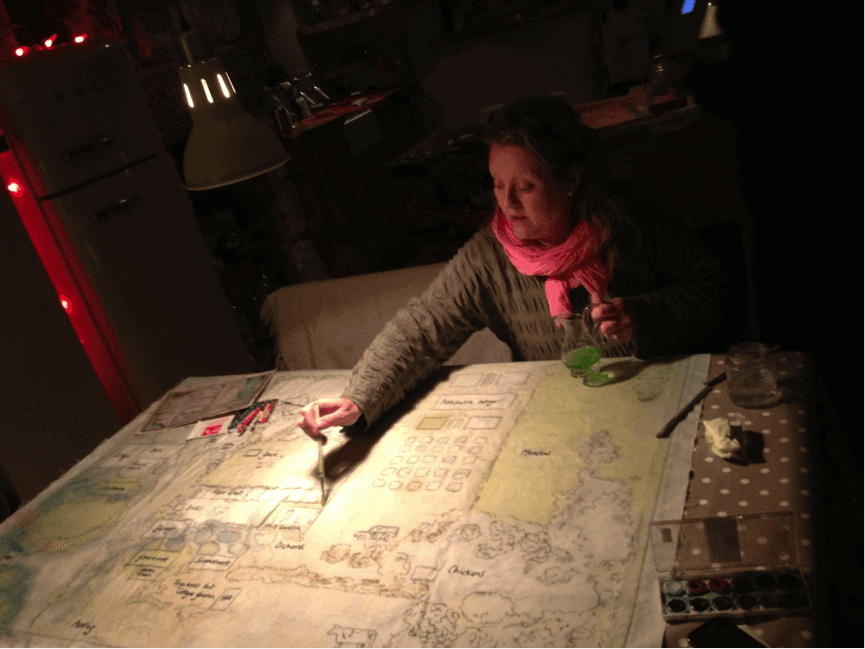
It was established that I would make an enlarged fabric map that could be hung at the entrance of the farm.
In order to harvest memories a lunch was arranged, and twelve artists were invited along to consider and choose an object that would link with their past. A map was designed very much influenced on Agatha Christy, the Fox terrier in the front page.
The magnifying glass was there to imply an intense focus and a lunch in the style of a child’s birthday party was provided to inspire a playful and relaxed mood, which served well as backdrop so that I had the opportunity to introduce everyone.
A Funny sort of murder mystery atmosphere developed whereby each artist began trying to figure out what media each artist worked in. This relaxed afternoon began in relaxed spirits and after an hour I introduced the collaborative proposal for the afternoons events, and also explained what had initiated the work.
Each artist was allotted a time to meet up with James Barber the photographer and Leon Phillips the sound recordist and interviewer. Originally I was going to interview each person about why they had chosen their object from the farm and what memories this envoked, but decided that it would be more playful if at the end of the afternoon whilst having afternoon tea and scones etc , and before the farewell and thank you, I would be shown the objects chosen and have to guess which artist had selected which object. Just a bit of extra mystery and playfulness….in the event I was really quite rubbish at guessing the write match ups.
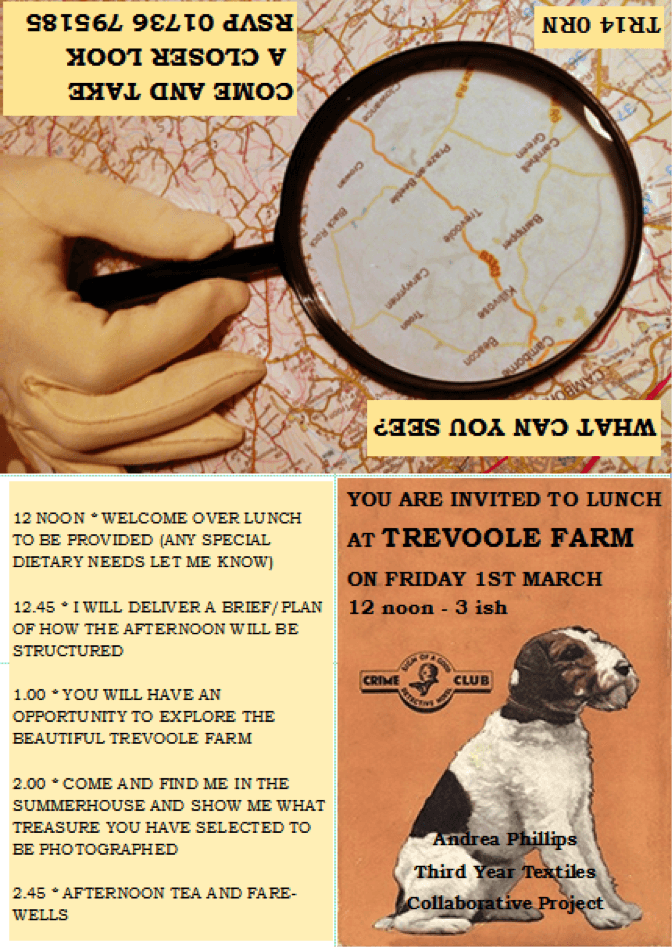
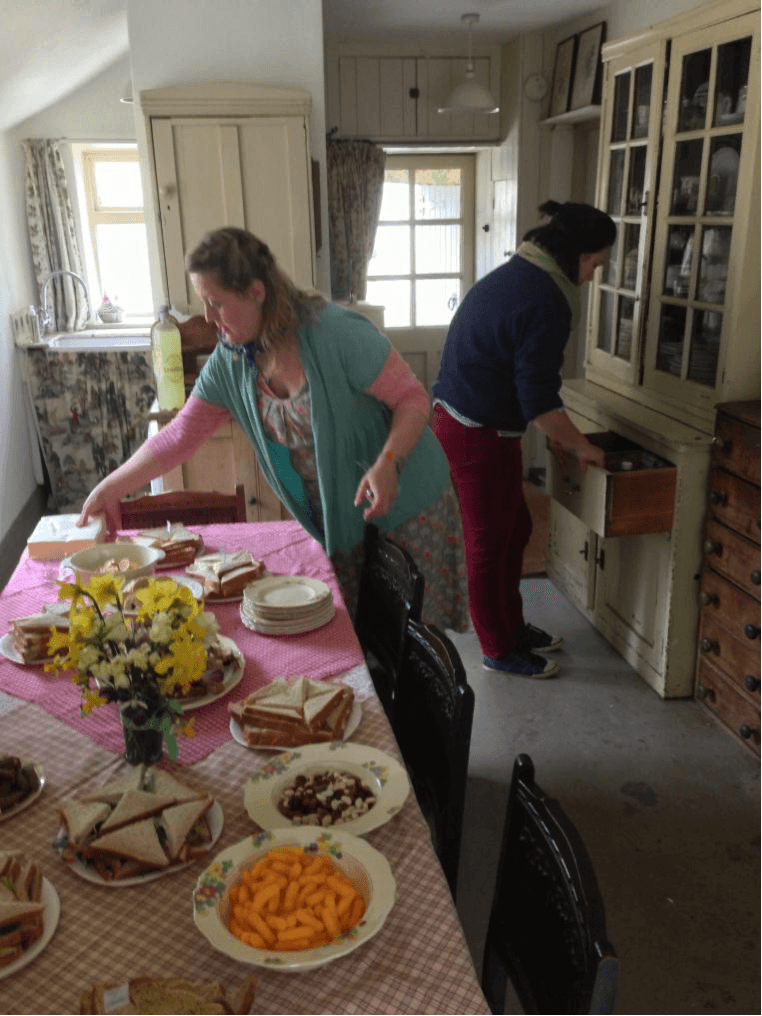
Beth and myself preparing lunch, in the original farmhouse, before the guests arrived.
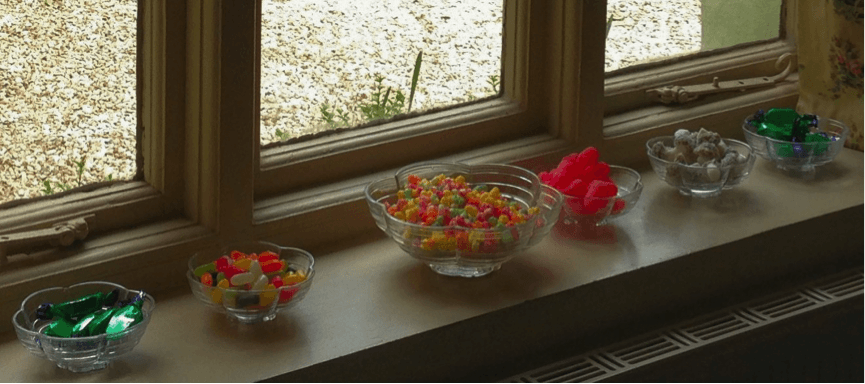
Guests all arrived and we all stood around eating and guessing and getting to know one another.
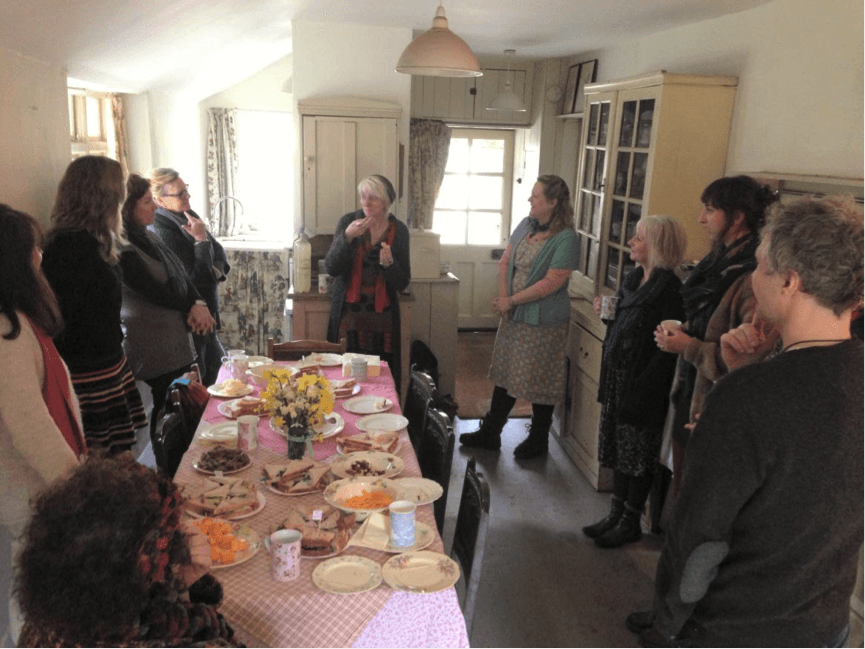
After lunch I was getting ready to deliver the proposal for the art work and the afternoon’s memory harvest schedule.
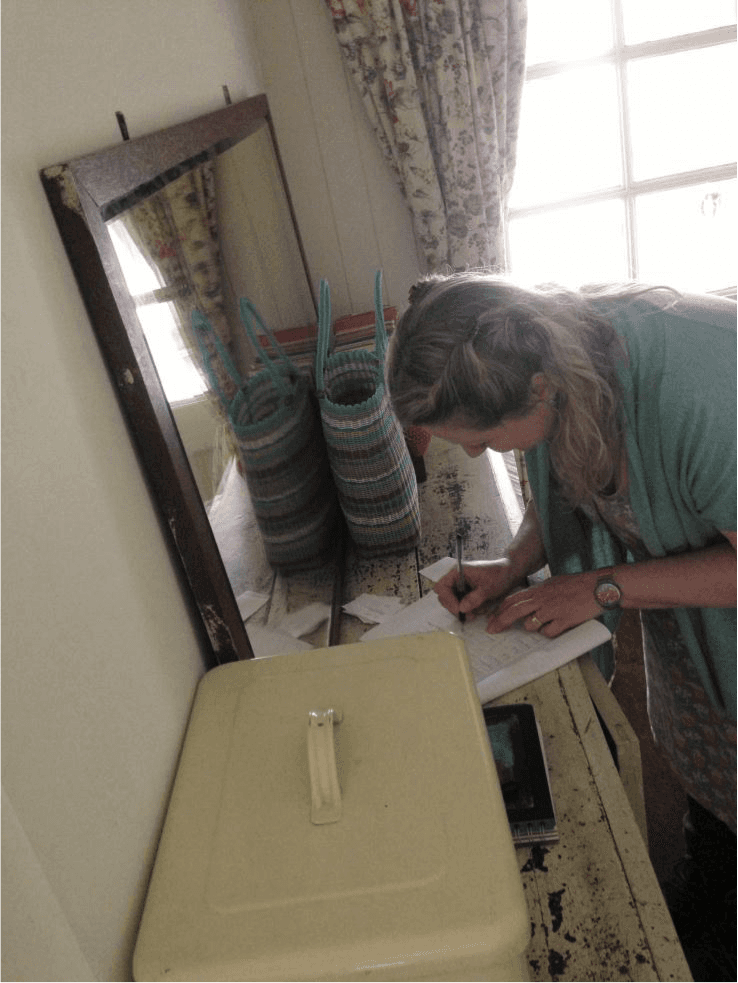
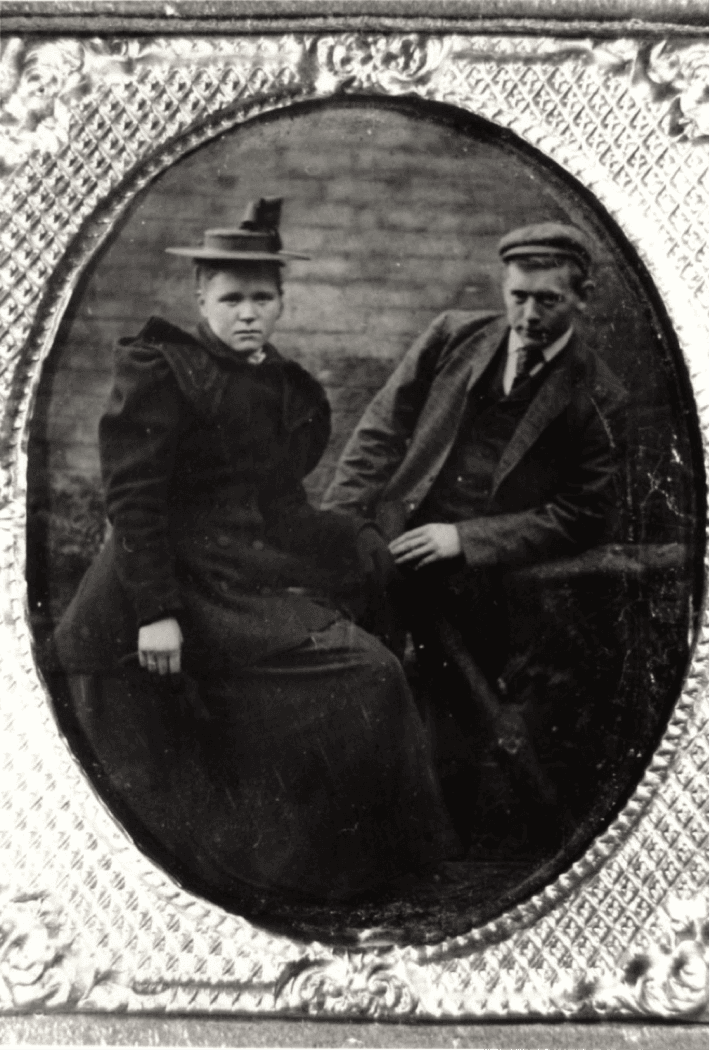
Above picture is of my maternal great grandparents who had a farm in north Yorkshire at the beginning of the 20th century. They were called Mary (a.k.a. Polly) and George Duck, the farm was in Loftus near Whitby and was called Grange Farm. When this photograph was taken they were engaged to be married, and if you look closely at their hands they were just touching each other, as it would have been unacceptable at that time to actually show any outward signs of affection.
Today I was play acting at being my great grandmother a farmers wife in the kitchen at Grange farm…but really Mrs Trevoole of Trevoole Farm near Canborne.
In the below picture Sian Andrews a contemporary Sculptor and Heather Carmen a Dancer and choreographer enjoy exploring the farm and outbuildings, with great excitement.
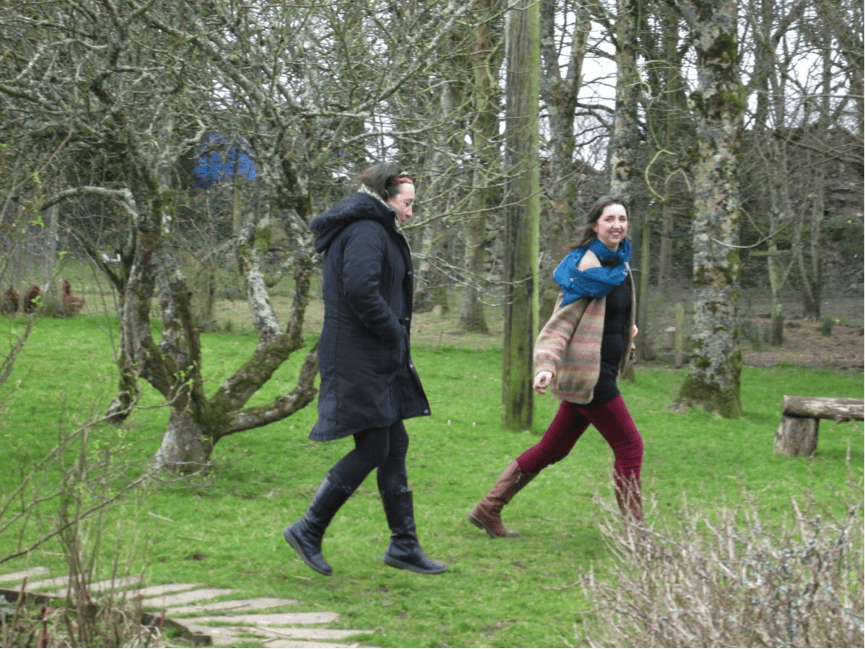
The next photograph documents my worry as I look at my watch only to realise that the artists were obviously having far too much fun and forgetting to report back to the meeting points.
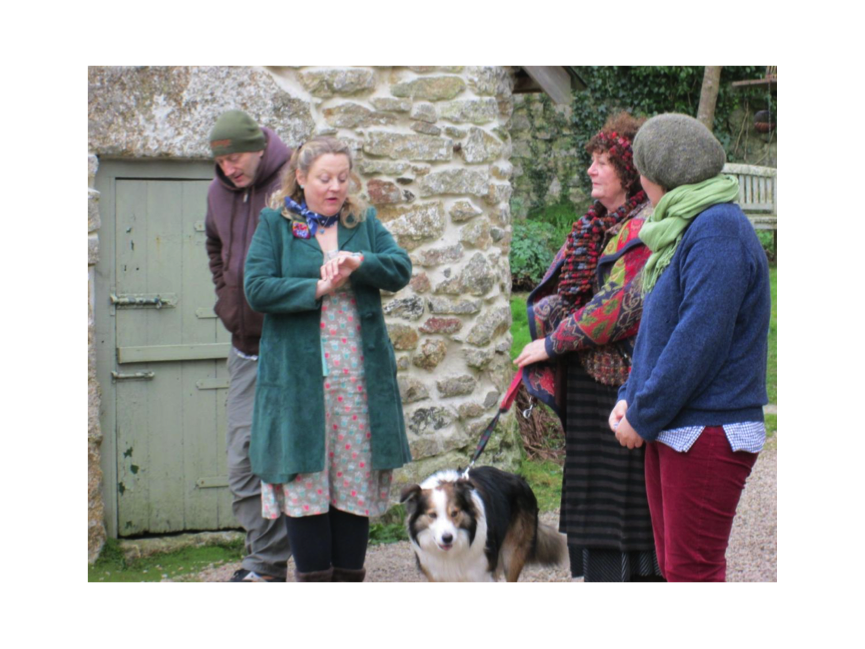
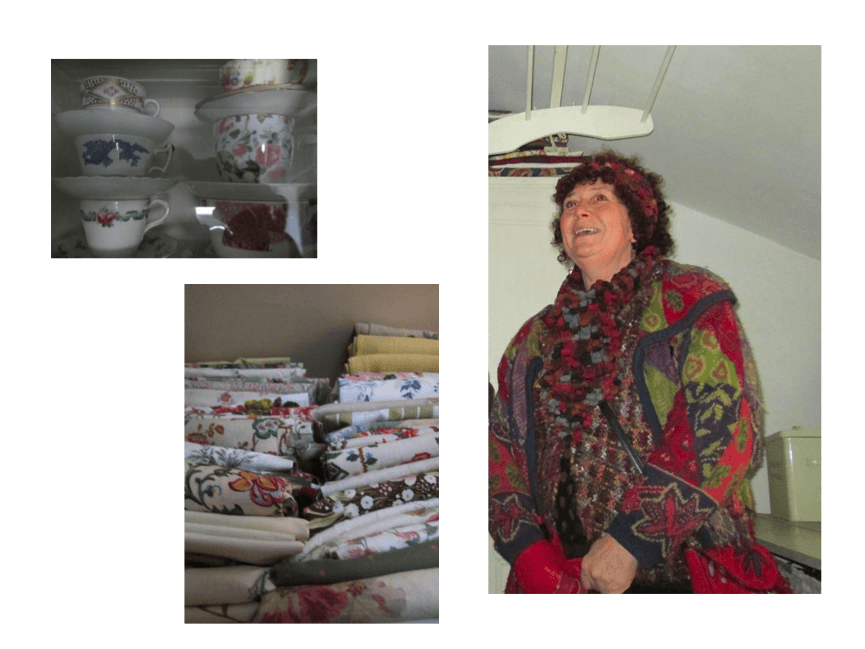
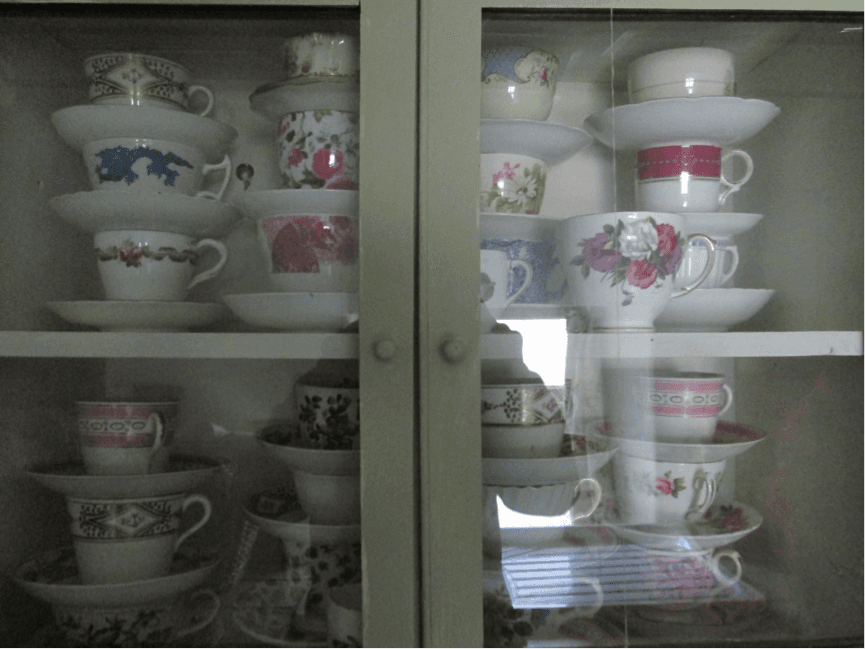
The pictures above are of the Textile artist Sue Dove who chose the laundry in the main farmhouse as her memory. She particularly liked the the piled of neatly folded vintage fabric and the tea cups that were in the china cabinet also in the Laundry.
I had struggled to think about how I would display the work that I made from the harvested memories, but then it struck me that my maternal mother would have preserved fruit and vegetables on her farm and so it would be good to make these little worlds of memories inside Jam Jars, to be preserved forever
This was a key moment where I realised that each preservative jar could be a separate world containing the memories from the Memory harvest at Trevoole Farm. Particularly the idea to hang the memory jars so that each separate world is floating.
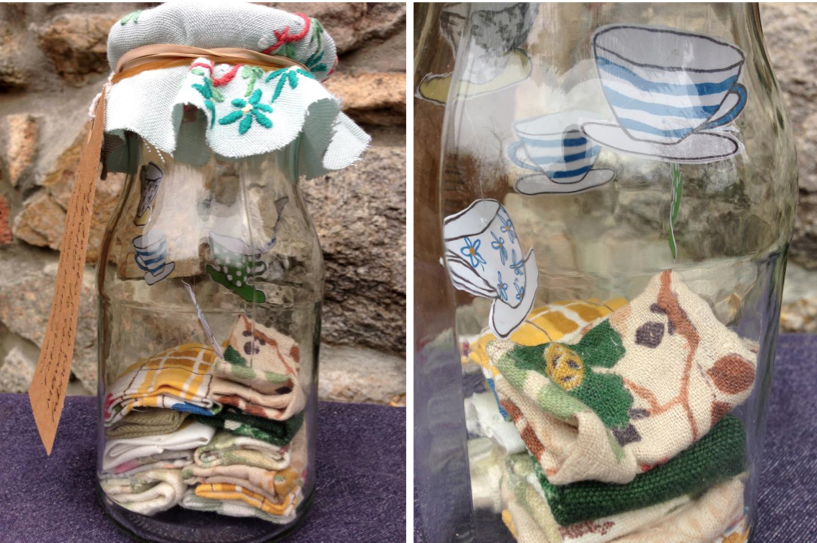
Print Maker- Zara Devereux chose the Greenhouse with all its Terrecota pots and seedlings. It reminded her of time spent with her Mum.
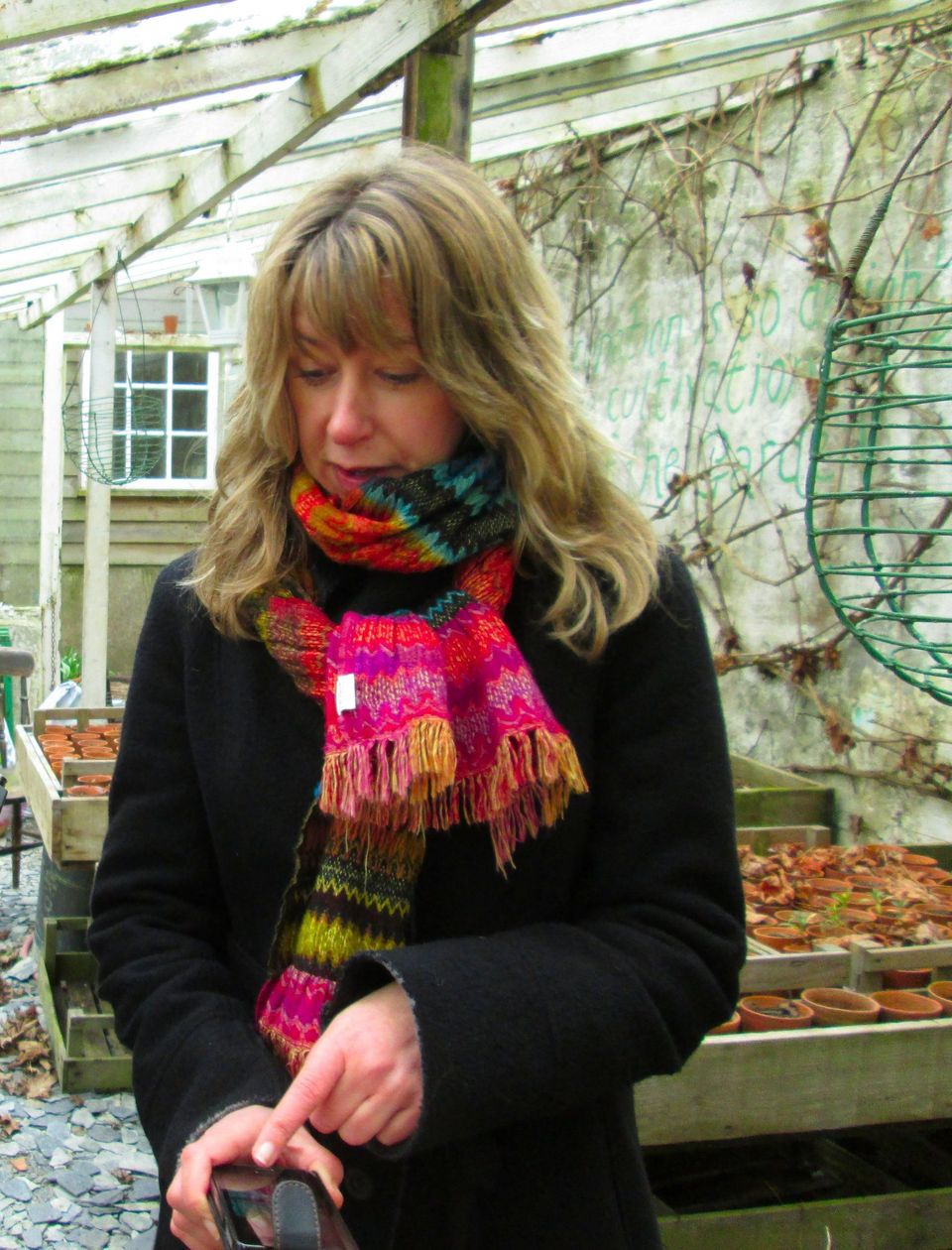
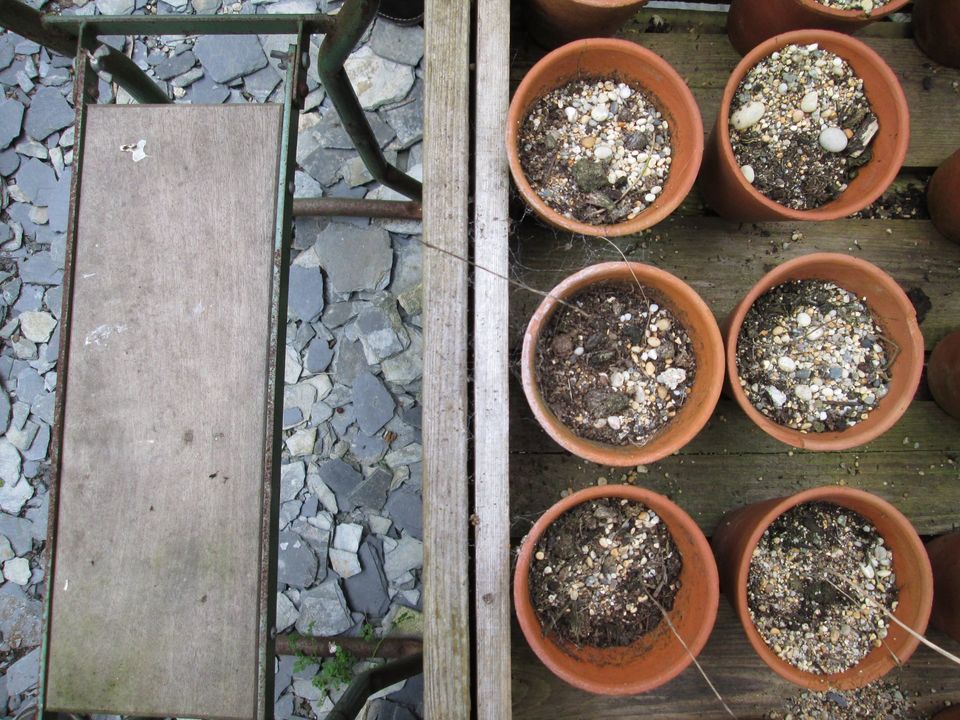
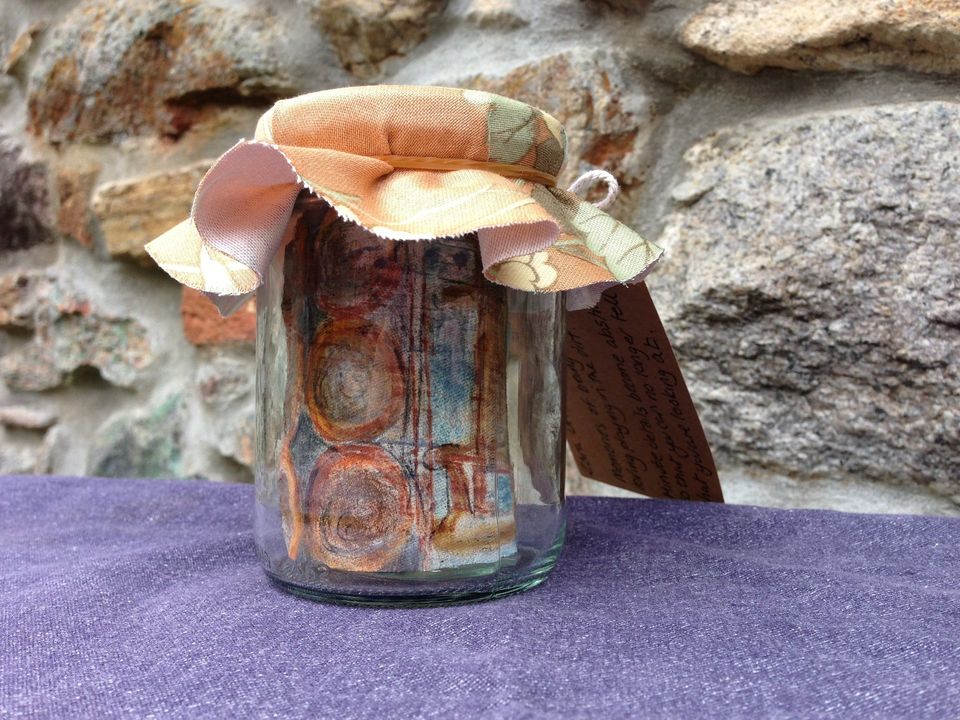
Linda Harris set designer chose a path leading to the pig area, where she found an abandoned football.
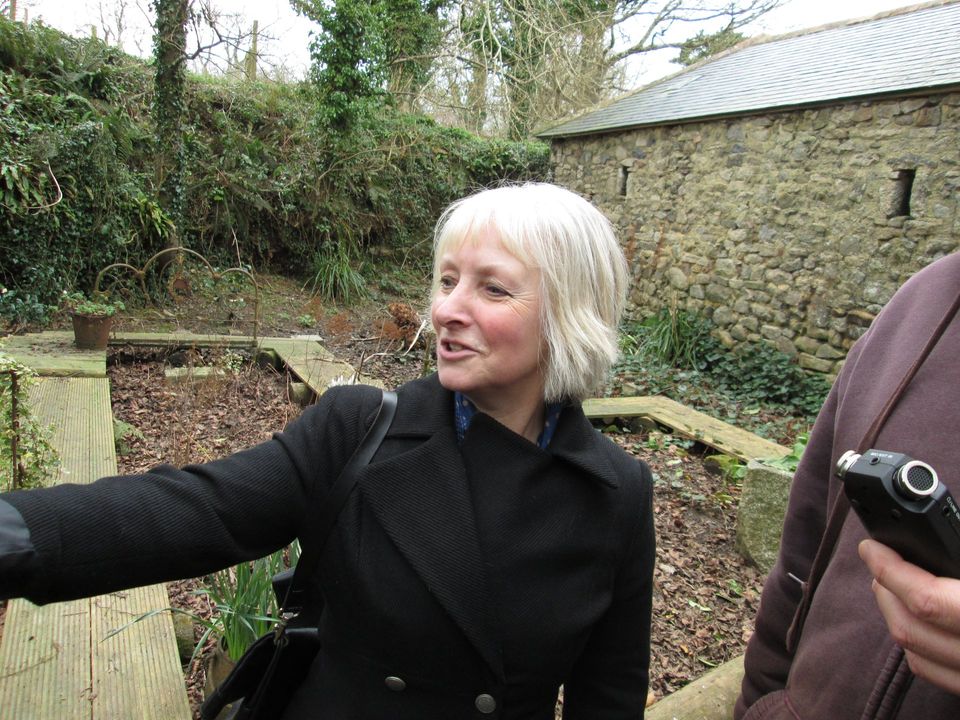
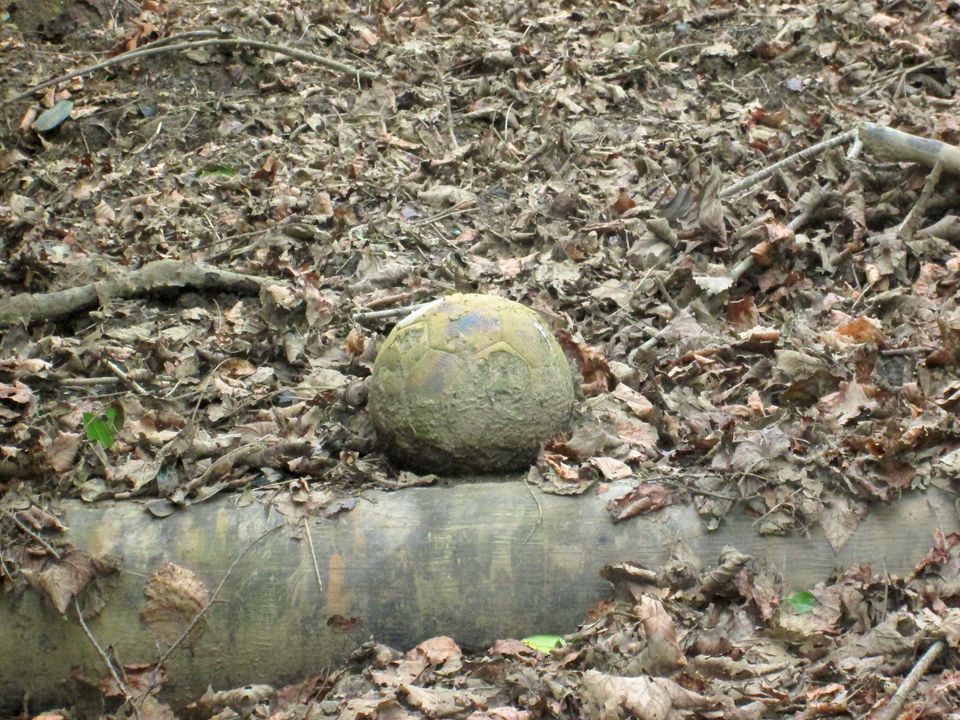
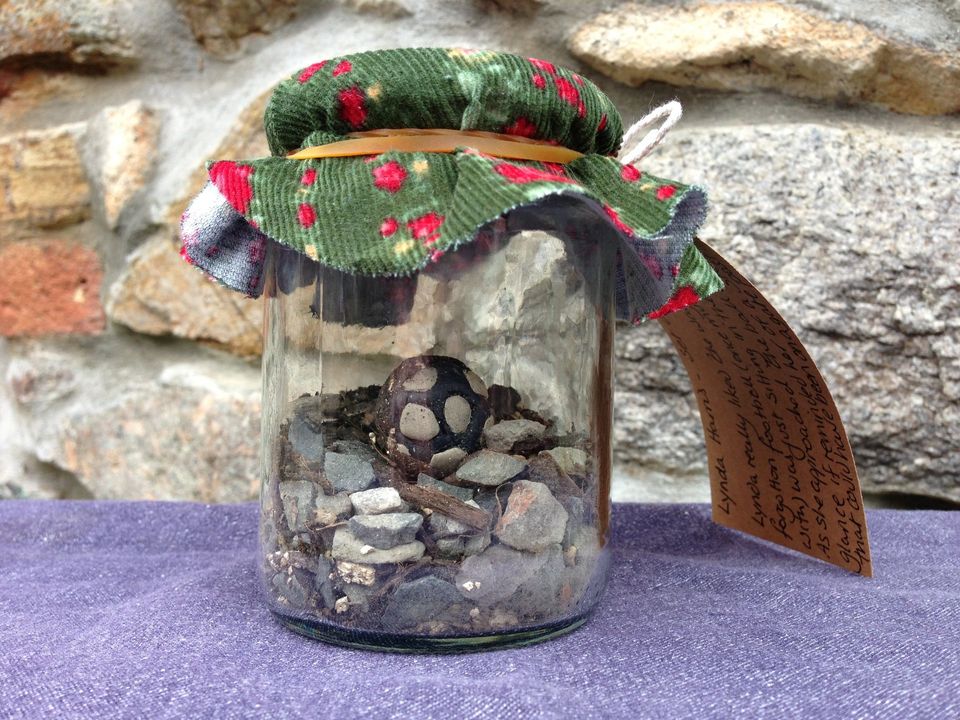
Davina Kirkpatrick an artist who works with glass, making sculptures that capture time and life, chose a child’s book from the children’s bedroom in the holiday cottage at Trevoole. She had that same book as a child so it really resonated with her.
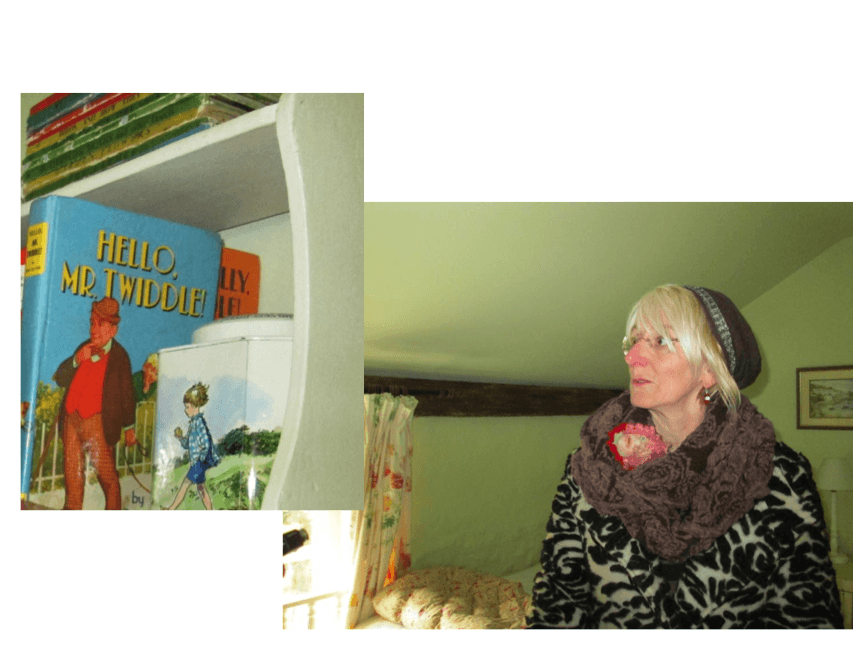

For this memory jar I made a smaller version of the book out of fabric.
Heather Carmen- Dancer and choreographer, chose the many jam jars of water that had been hanging there since long summer nights of the previous year when they were originally there to hold citronella tea lights. She loved that a smaller world had been created in each jar, but mostly loved the old tree that they were hanging from in the orchard at Trevoole.
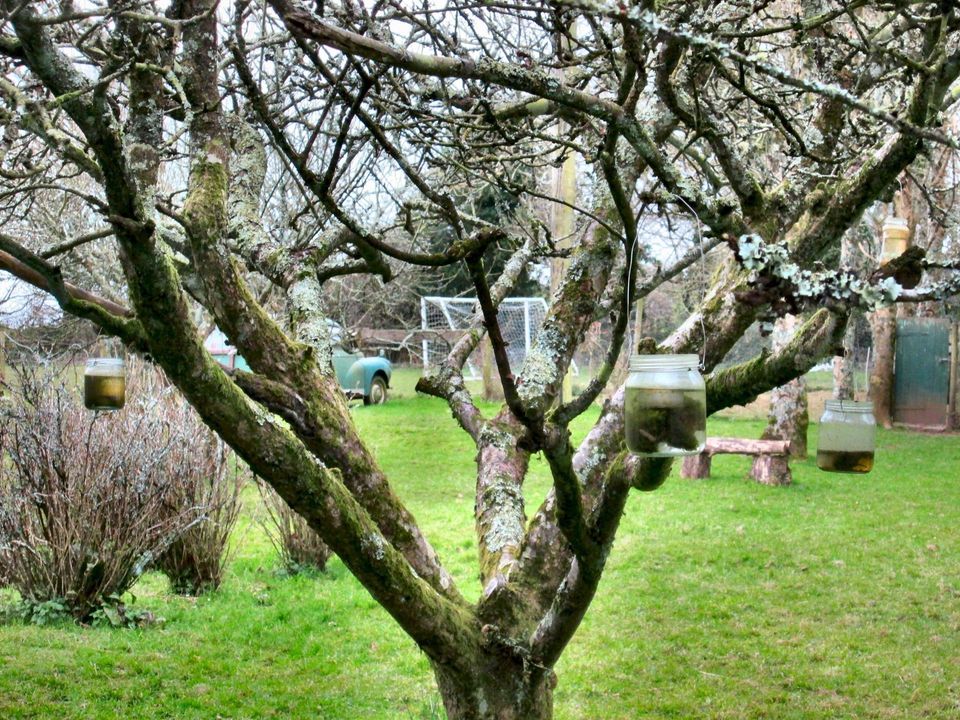

Dawn Parsons – Textile artist wanted to take part in the day but lives in wales so she chose from remote photographs of the Farms website a picture of an old Lawn mower that was an exact replica of the one her Dad had always used when she was a child.
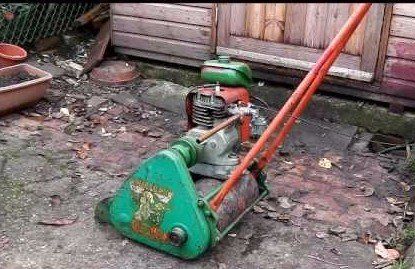
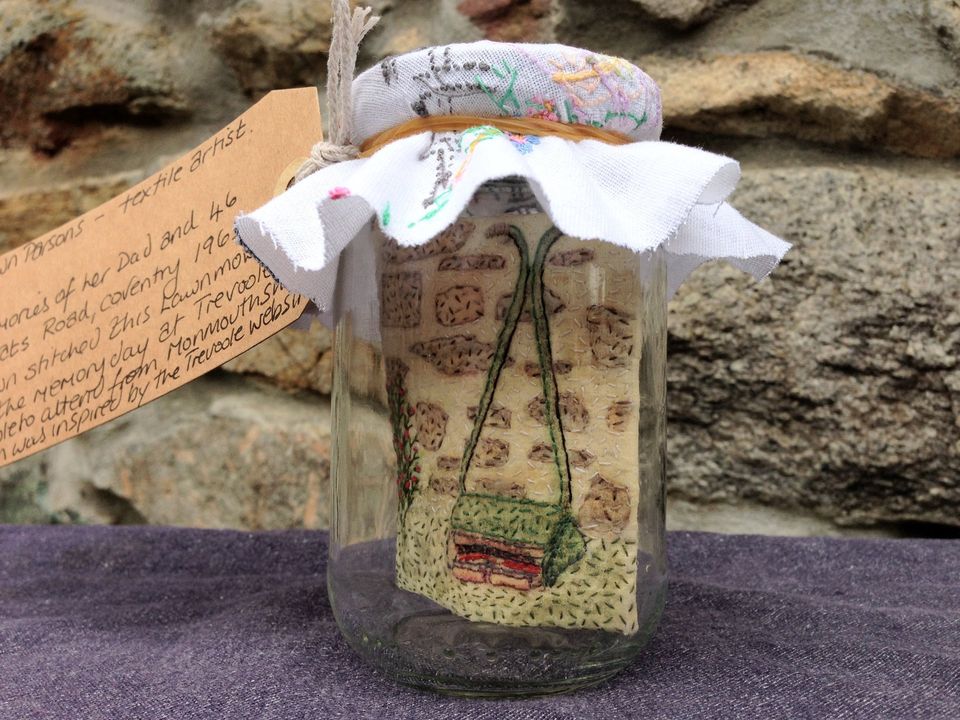
James Barber - Installation Artist, was my photographer for the day so I could be in my role as Mrs Trevoole. He shared the back of my car with the many balloons we brought along to help create a children’s party atmosphere.
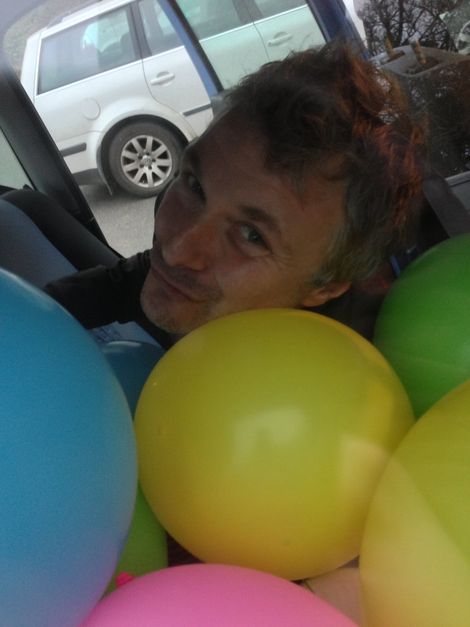
All the guests were enjoying looking at the photographs of the chosen areas and objects and gathered in the kitchen next to the Aga to get warm and enjoy the wonderful cheese scones Beth had just baked.
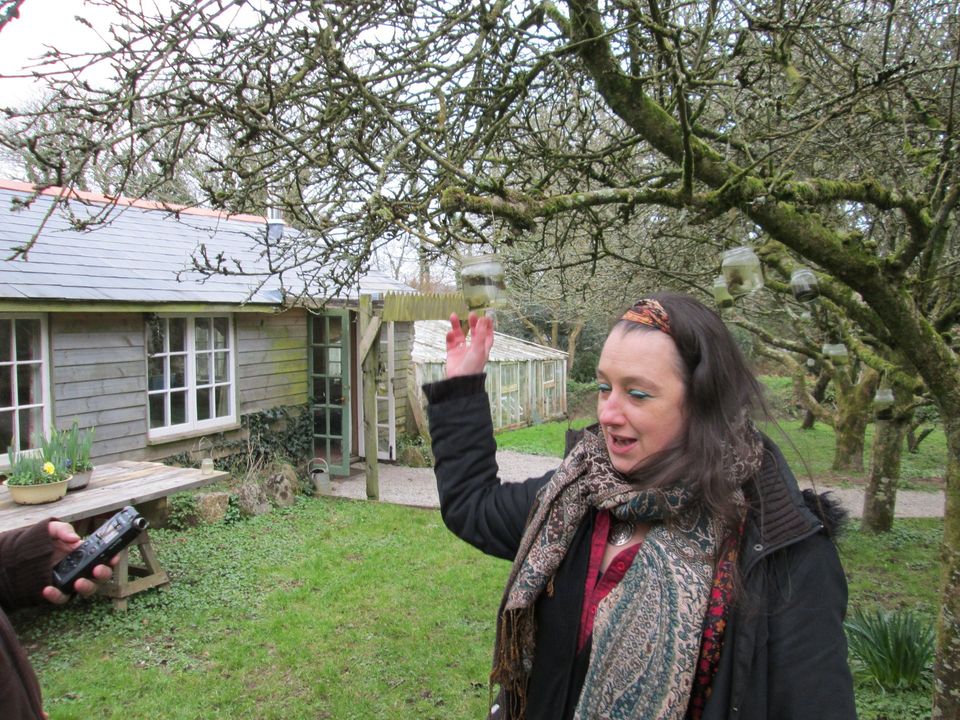
Leon Phillips- Sound Engineer, above talking to Heather and below talking to Gail Pryce, the interview questions were the same for all the artists, but with room for discussion about why they had chosen their object and its location and what memory did this evoke.
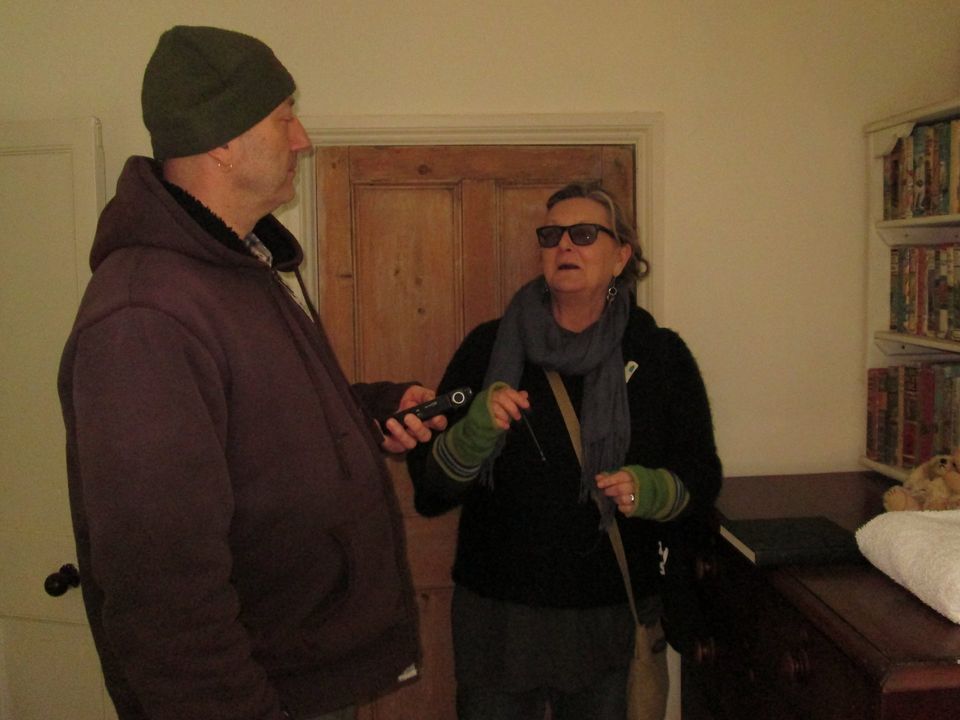
Gail Warner Pryce a jewellery maker, also found inspiration from the children’s bedroom and also chose the old fifties books from the shelf.
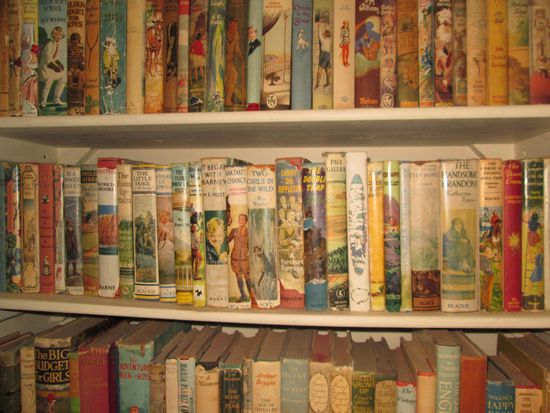
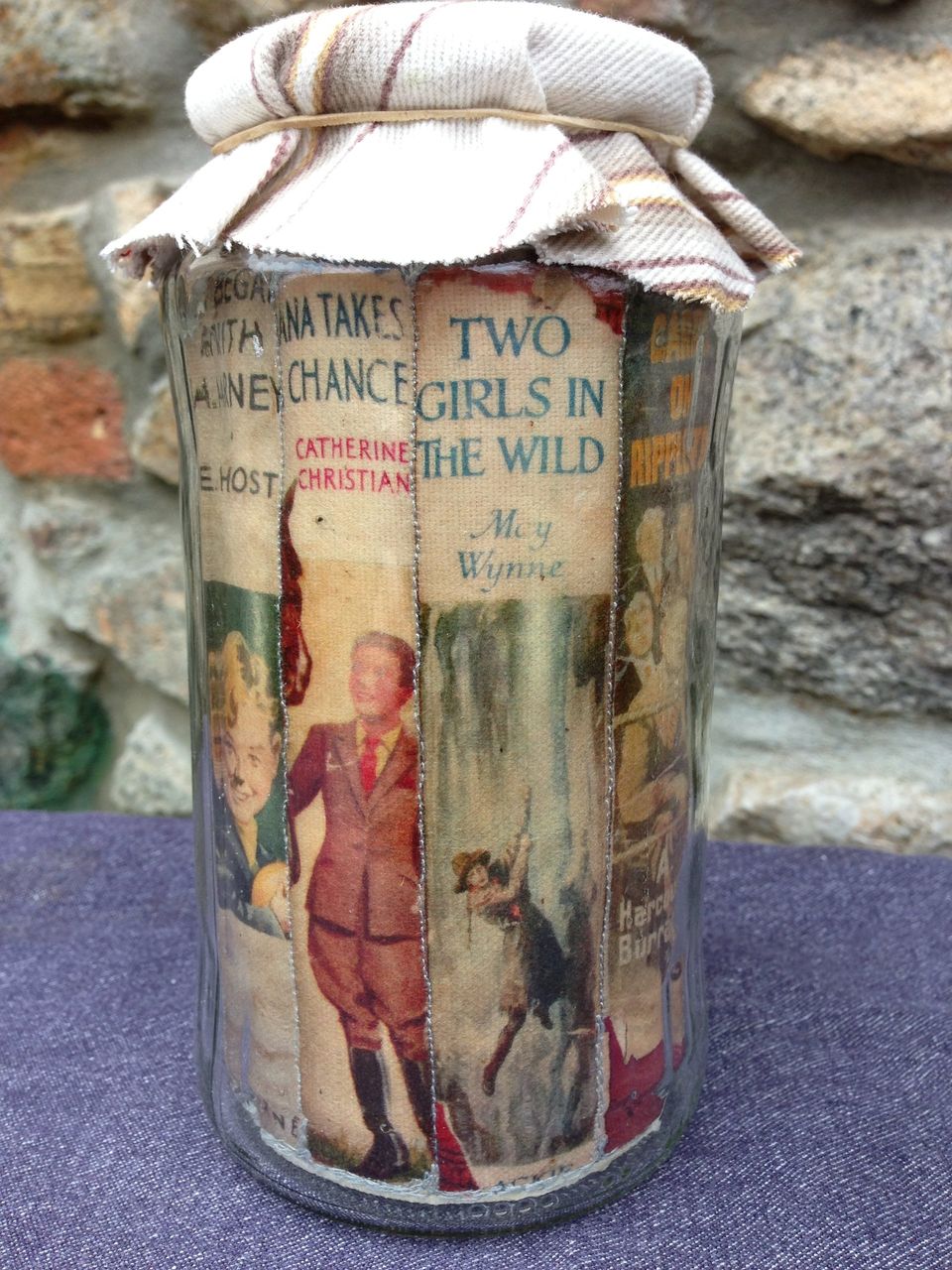
Sian Andrews- Sculptor, chose the potting shed and and all the old tools and spiders and their webs as it reminded her of hours of lovely memories she had, had with her grandfather on the family allotment. She wrote a poem that I made into fabric but kept her original writing and crossings out as it all seemed so evocative and personal, and truthful in its dark space and crossings out.
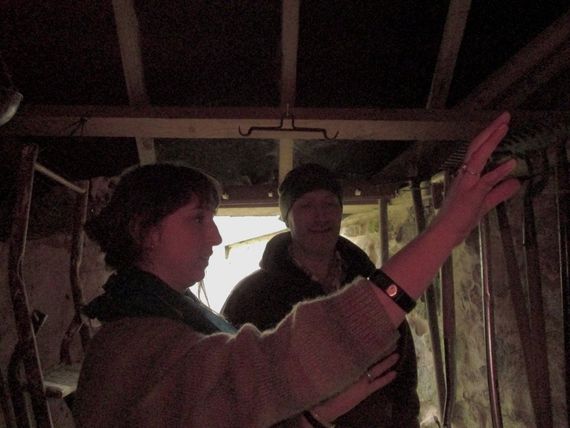

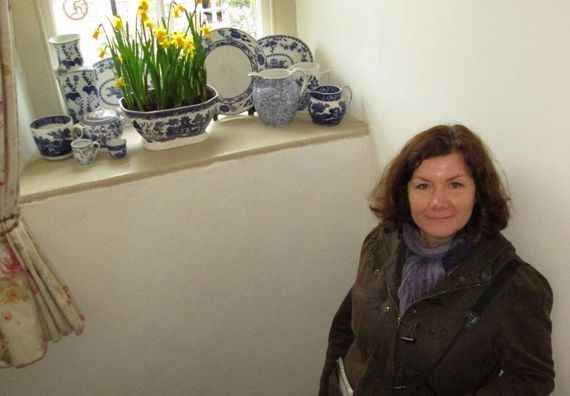
The above blue and white pots and spring display of daffodils were on a windowsill in the main farmhouse and reminded Sarah Cook- Art Historian of how many lovely things she had given away in the past due to lack of space and money. Sarah wished to incorporate that loss to a future memory she wanted to have whereby she would be recreating this display as a kind of ode to the lost pots.
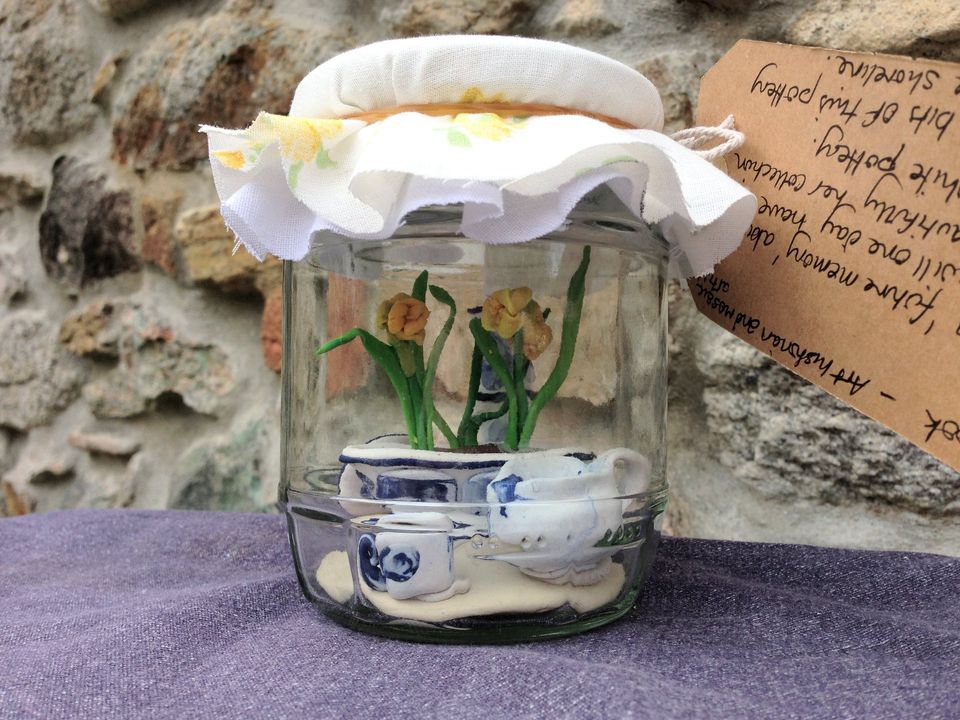
The following two photographs are of Felicity Bird – Abstract painter. Felicity chose the summer house and the stack of summer hats that were piled up in one corner. It reminded her of long endless summers.
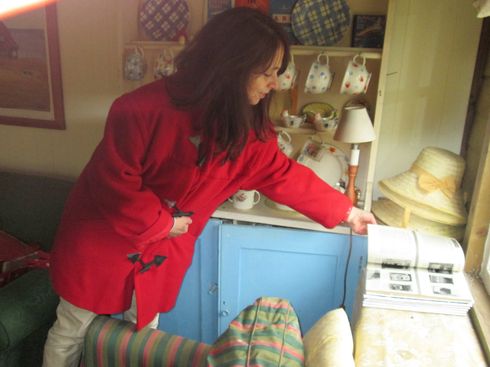
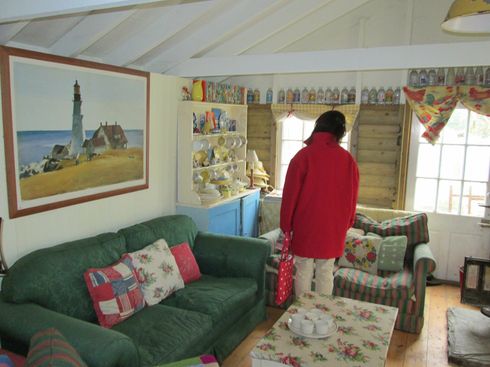
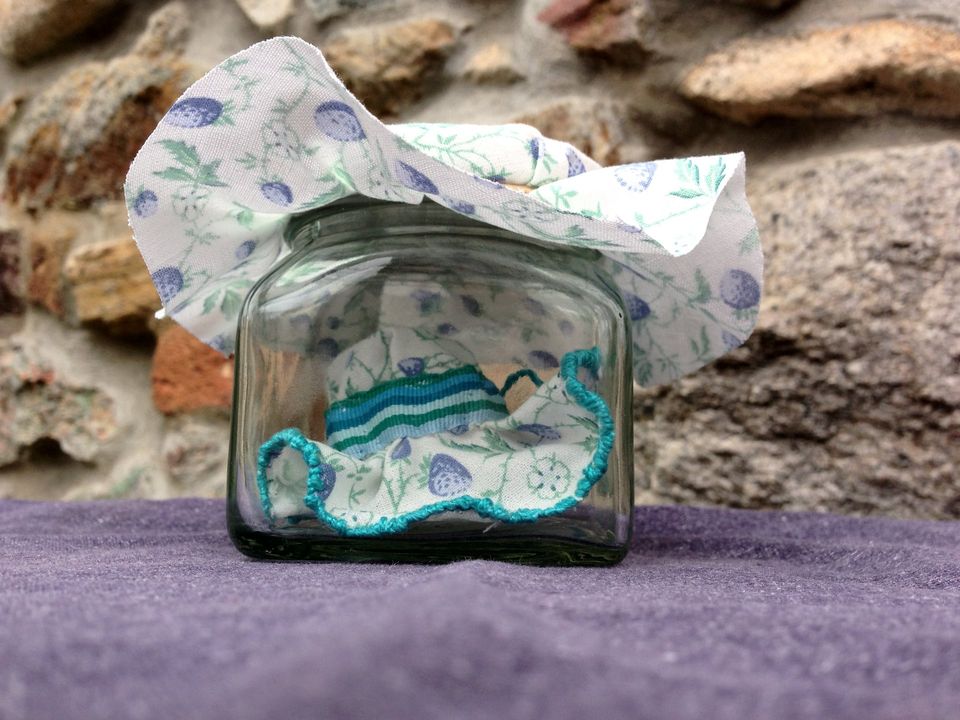
Mrs Trevoole aka 'Polly Duck' chose the chickens as her memory harvest as it reminded me of an old family story about Polly Duck at her own farm all those years ago. After the death of George Duck my maternal great Grandma was forced to leave the farm in her old age and was so upset by this and by having to go and live with her daughter that she gathered all the furniture and all the duvets and eiderdowns she had made over the years from her own goose and chicken feathers, piled them high in the farmhouse yard and then set fire to them all.
My Mum said that she was only a child of about seven so this must have been in 1934, when her mum and her had arrived to pick up Polly, only to find her in the yard with a massive bon-fire of all her possessions roaring with flames
The back draft had propelled all the feathers up high into the air and they were now falling down around them like snow flakes on a still winters day.
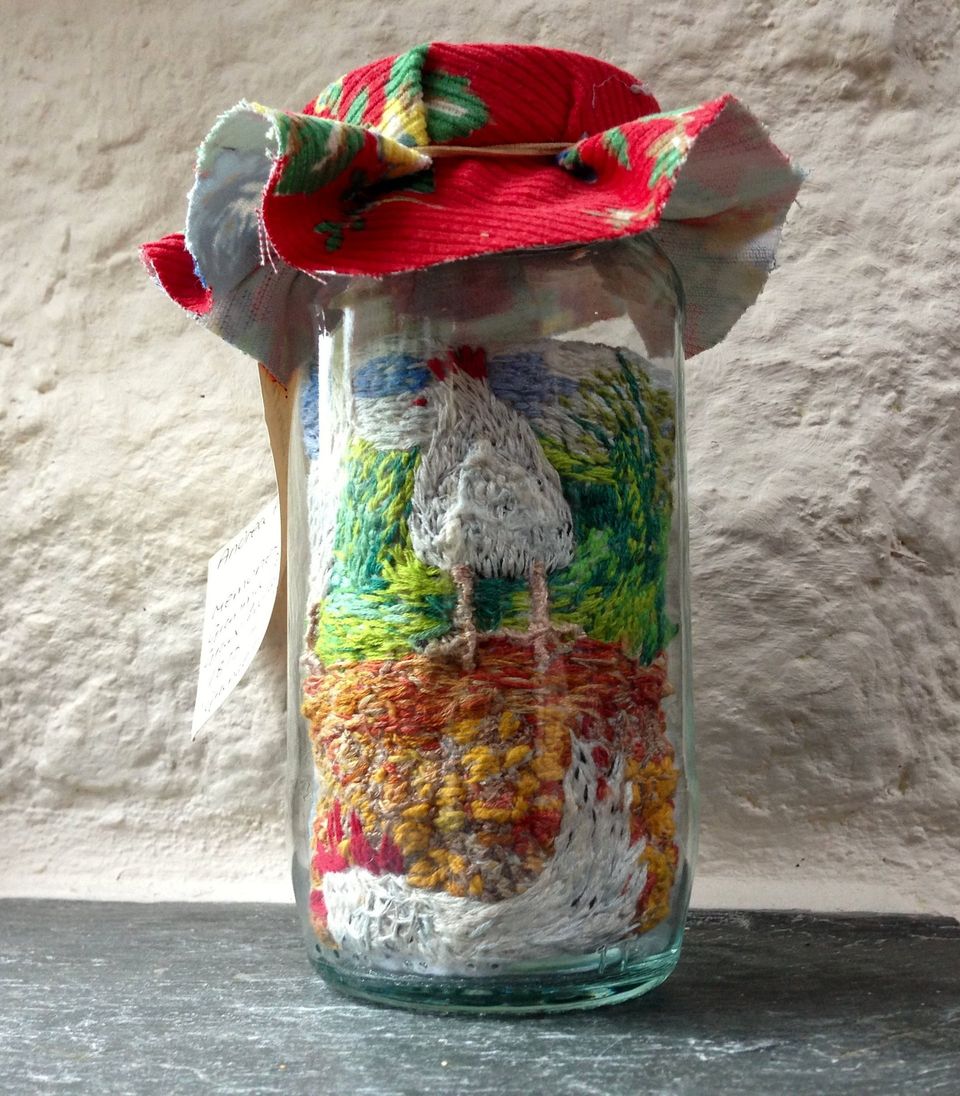
Time to go home – Mrs Trevoole aka Polly Duck waving Goodbye to the guests, from the farmhouse door all memories recorded both visually and by sound in the interviews.
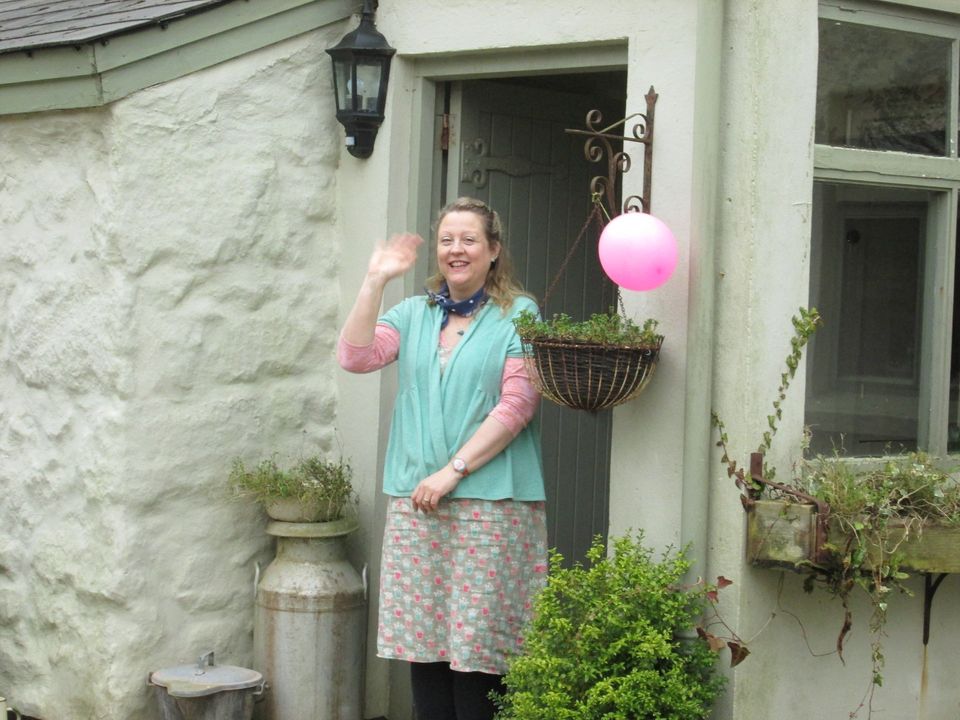
The completed map and memory harvest was to be displayed at the Farm on the open day for the National Garden scheme in June 2012.
For the sake of feedback I displayed this site based work out of place in a corridor at college as a preview and to test out all the working components.
The old radio below appeared to playing live ( as if on the radio now) the interviews of the chosen artists at the Trevoole Memory day harvest, talking about the objects that they had chosen and that were now displayed above the floating words as floating images of preserved memories in their preserving jars.

